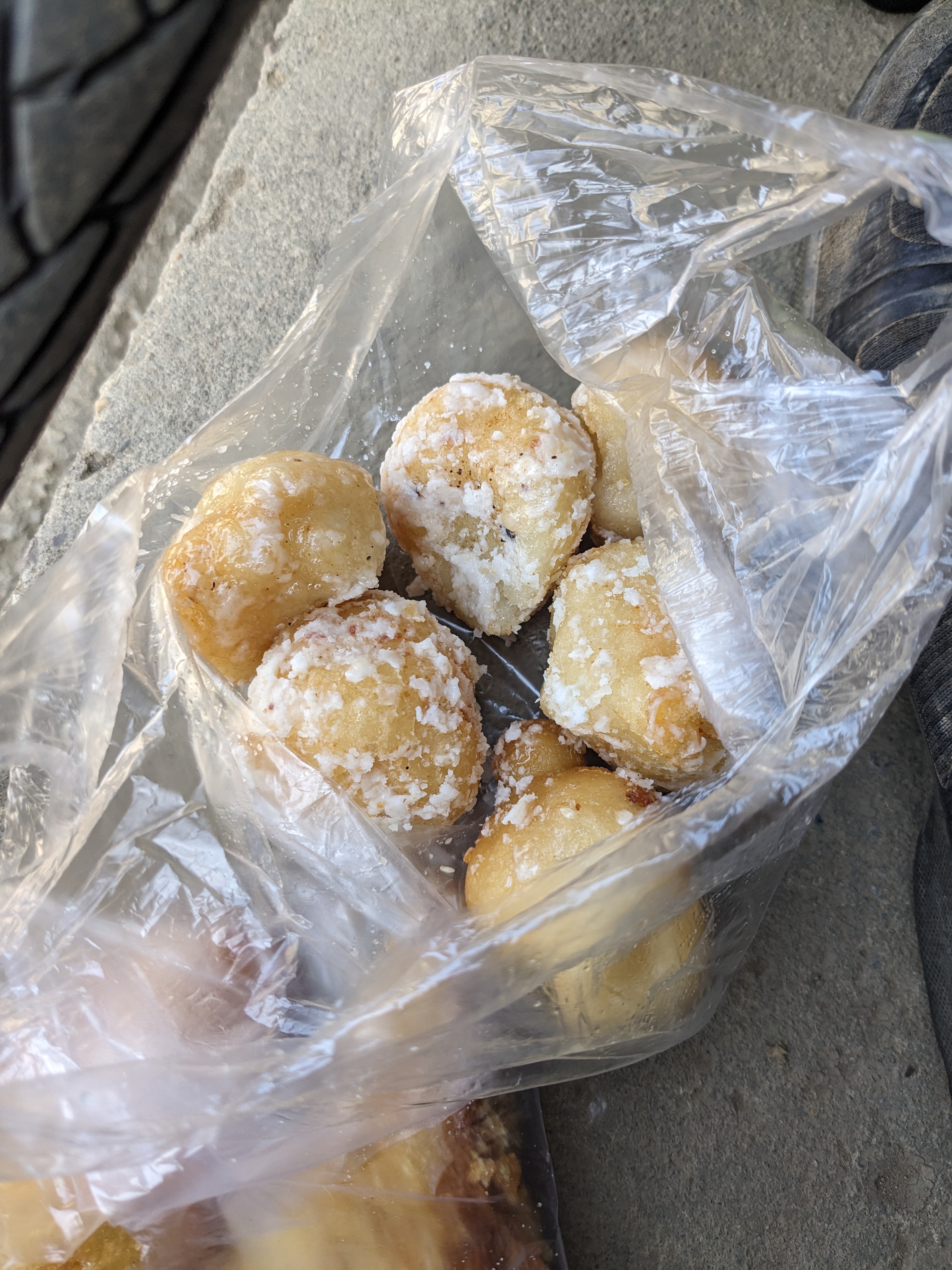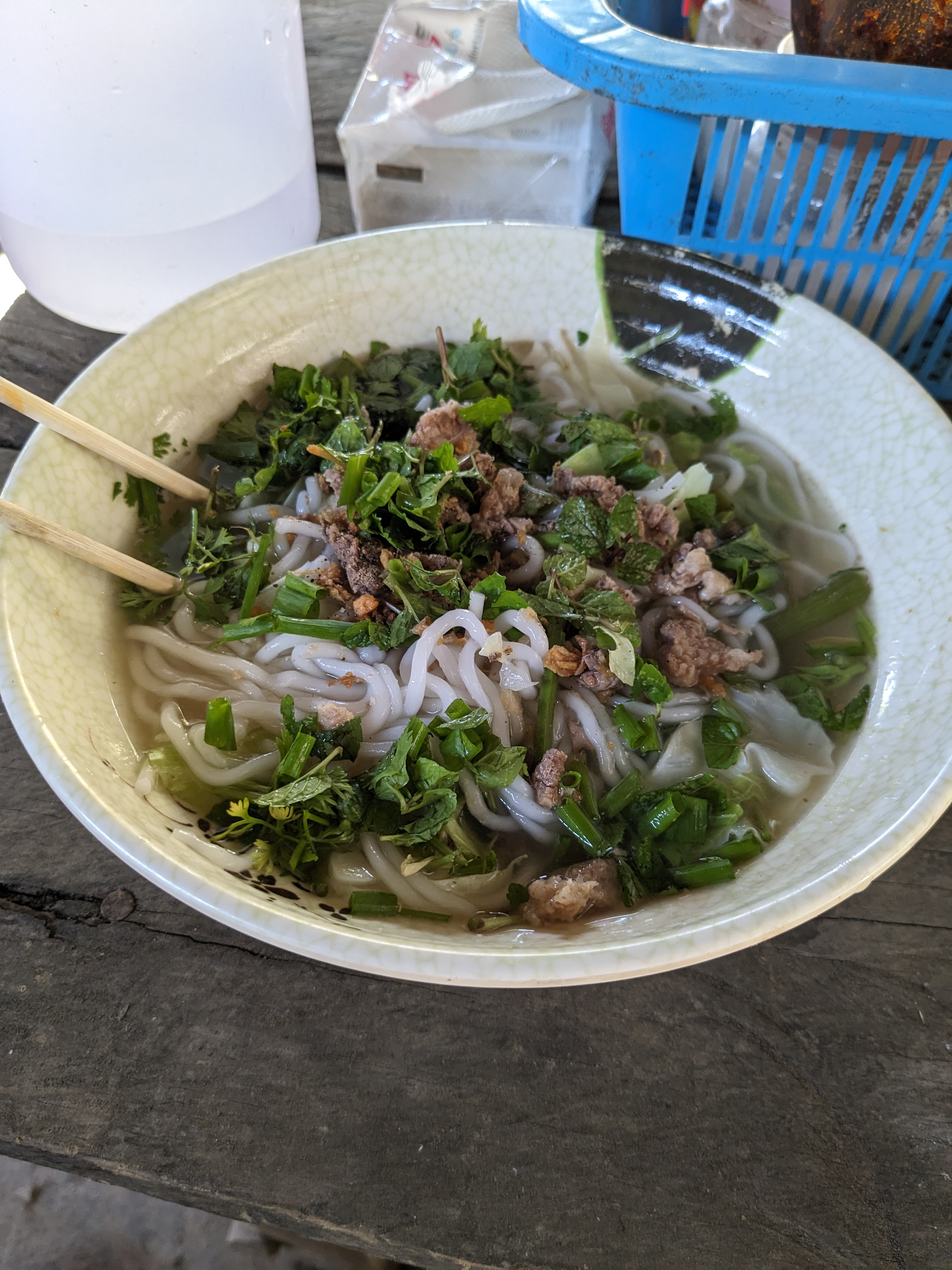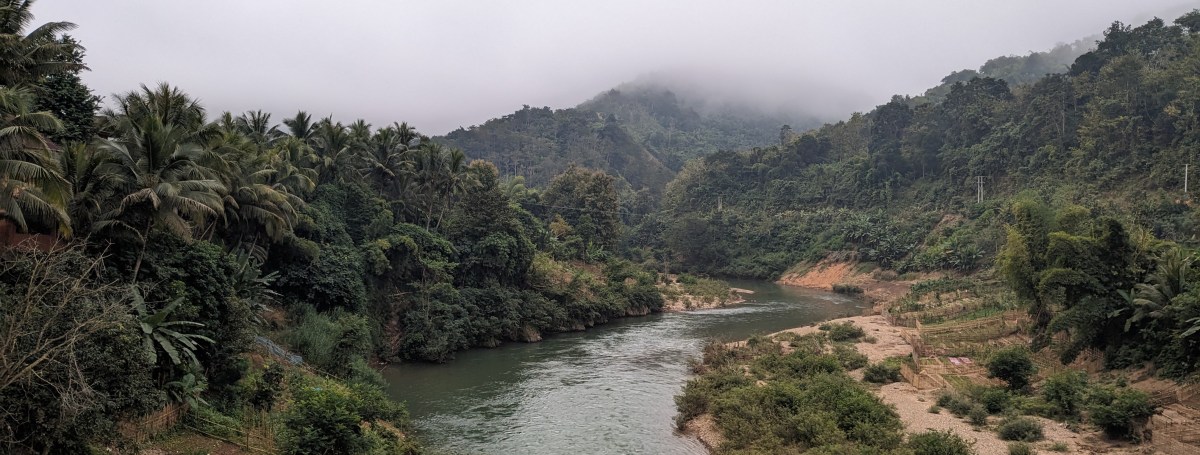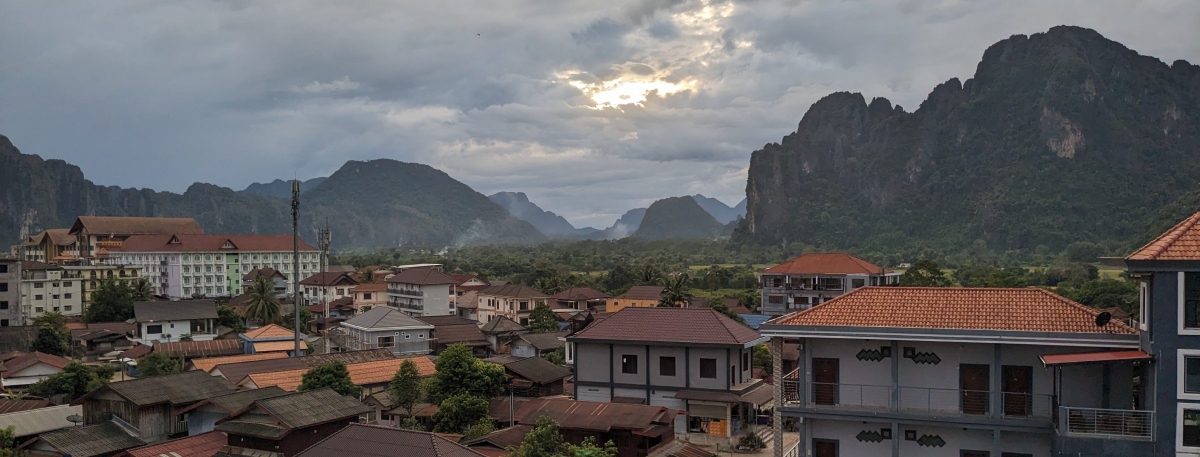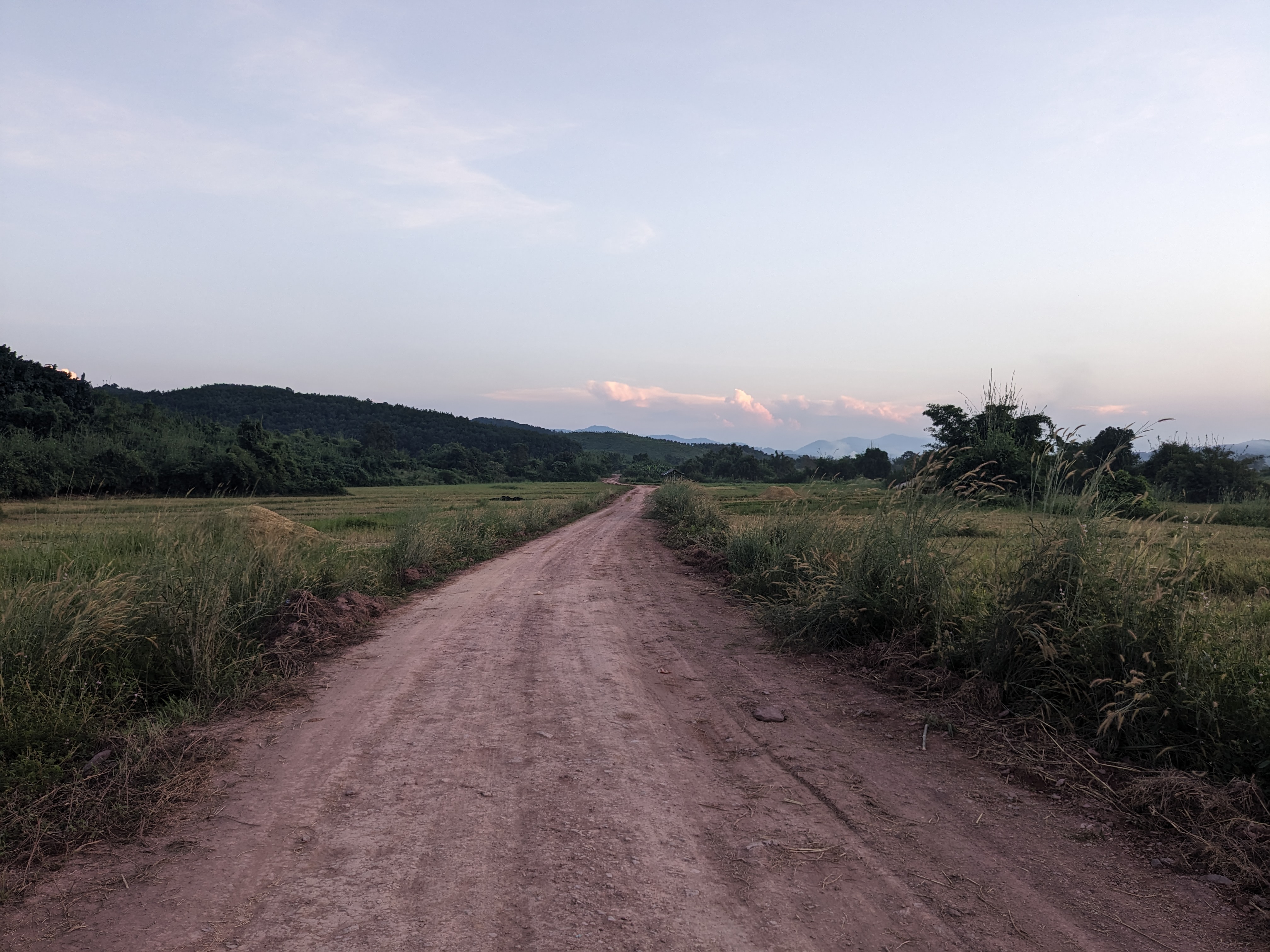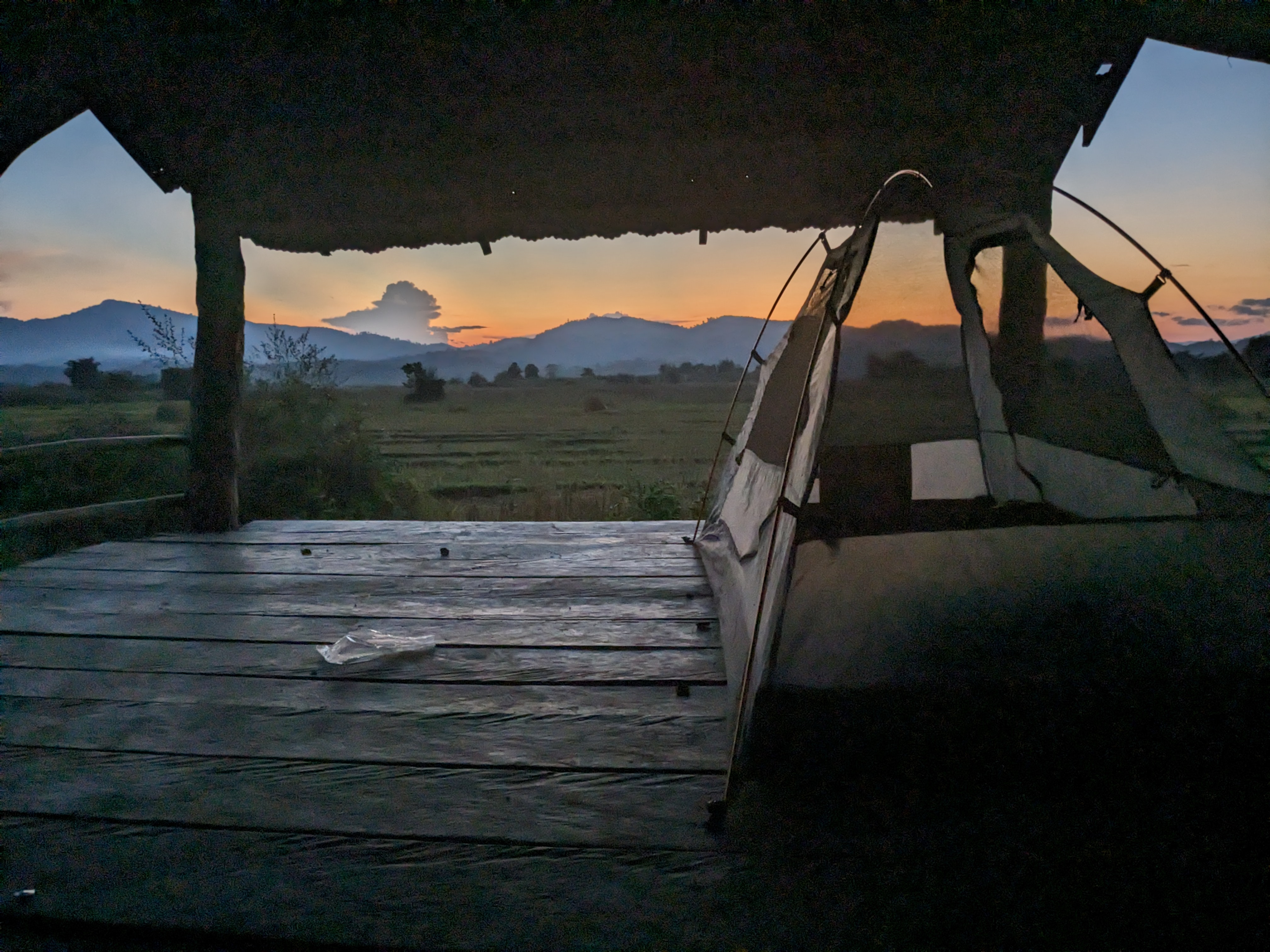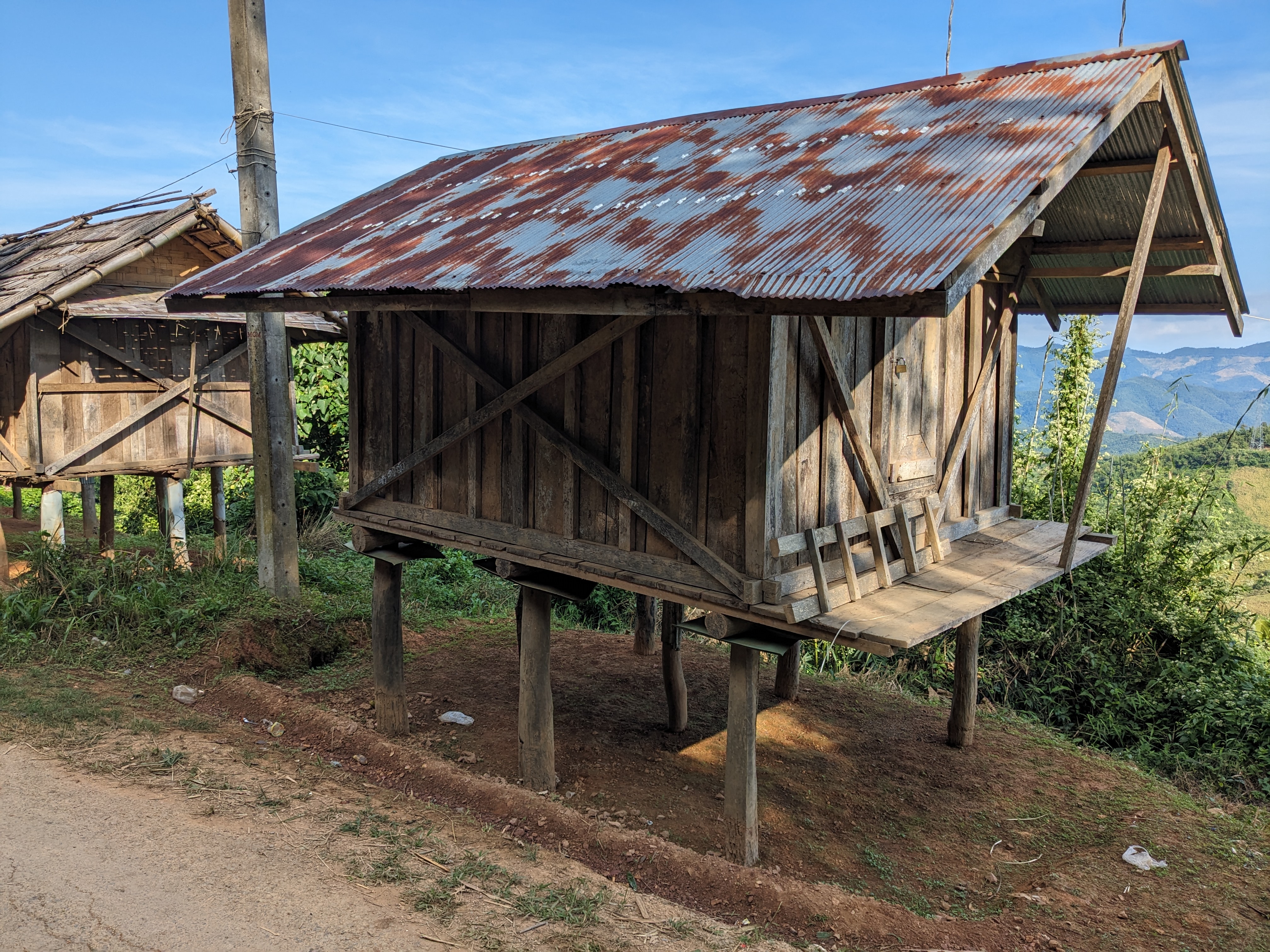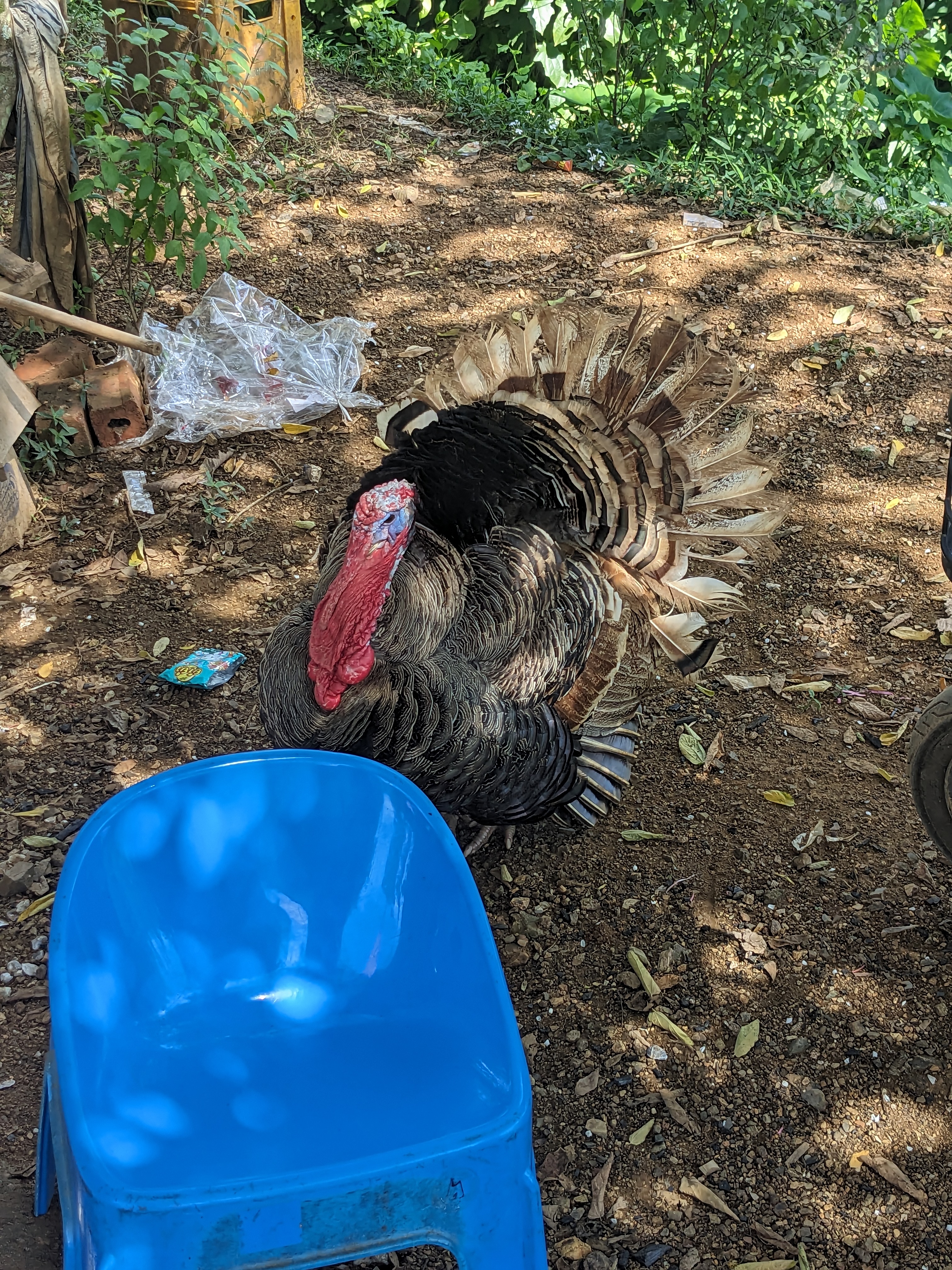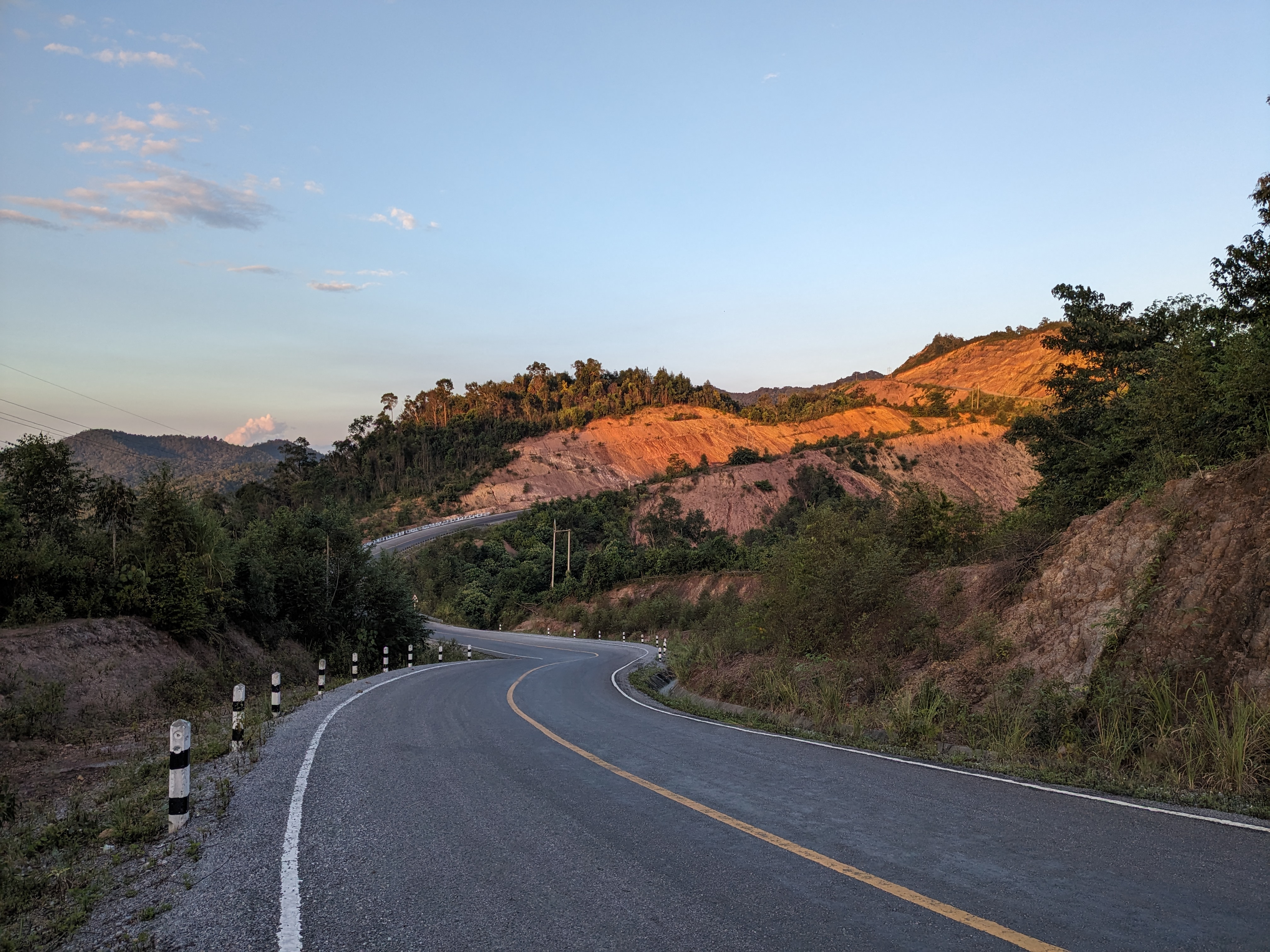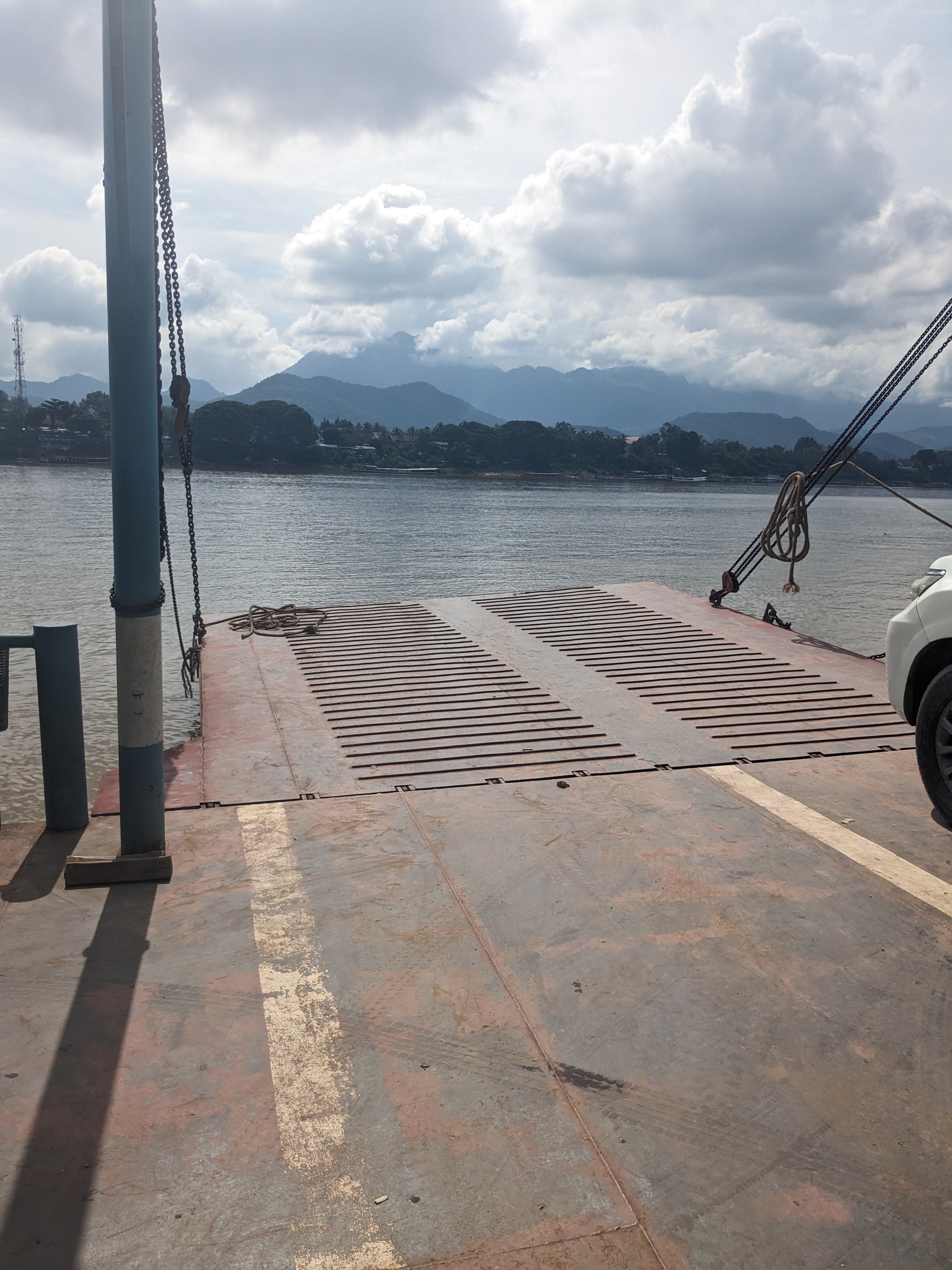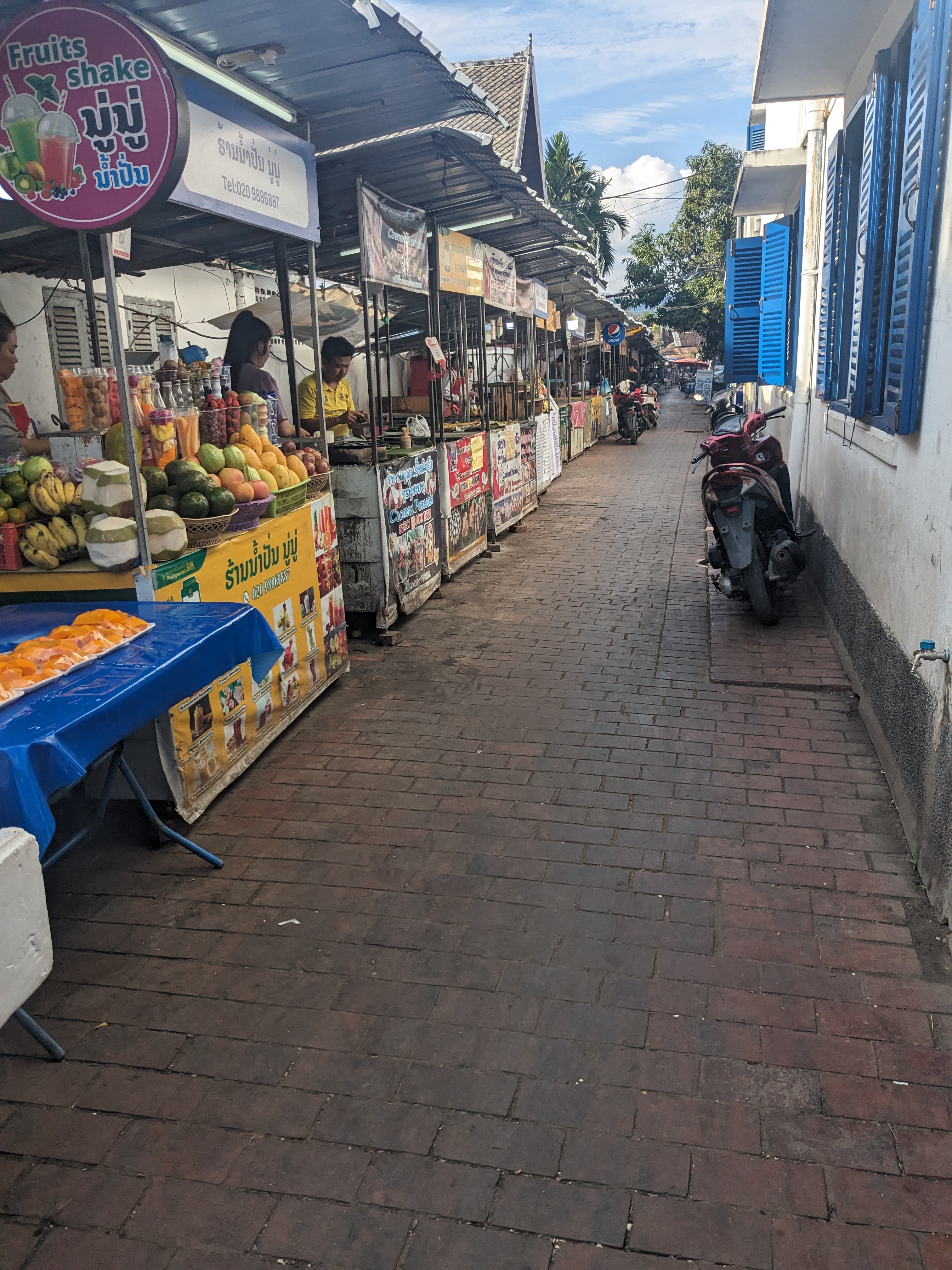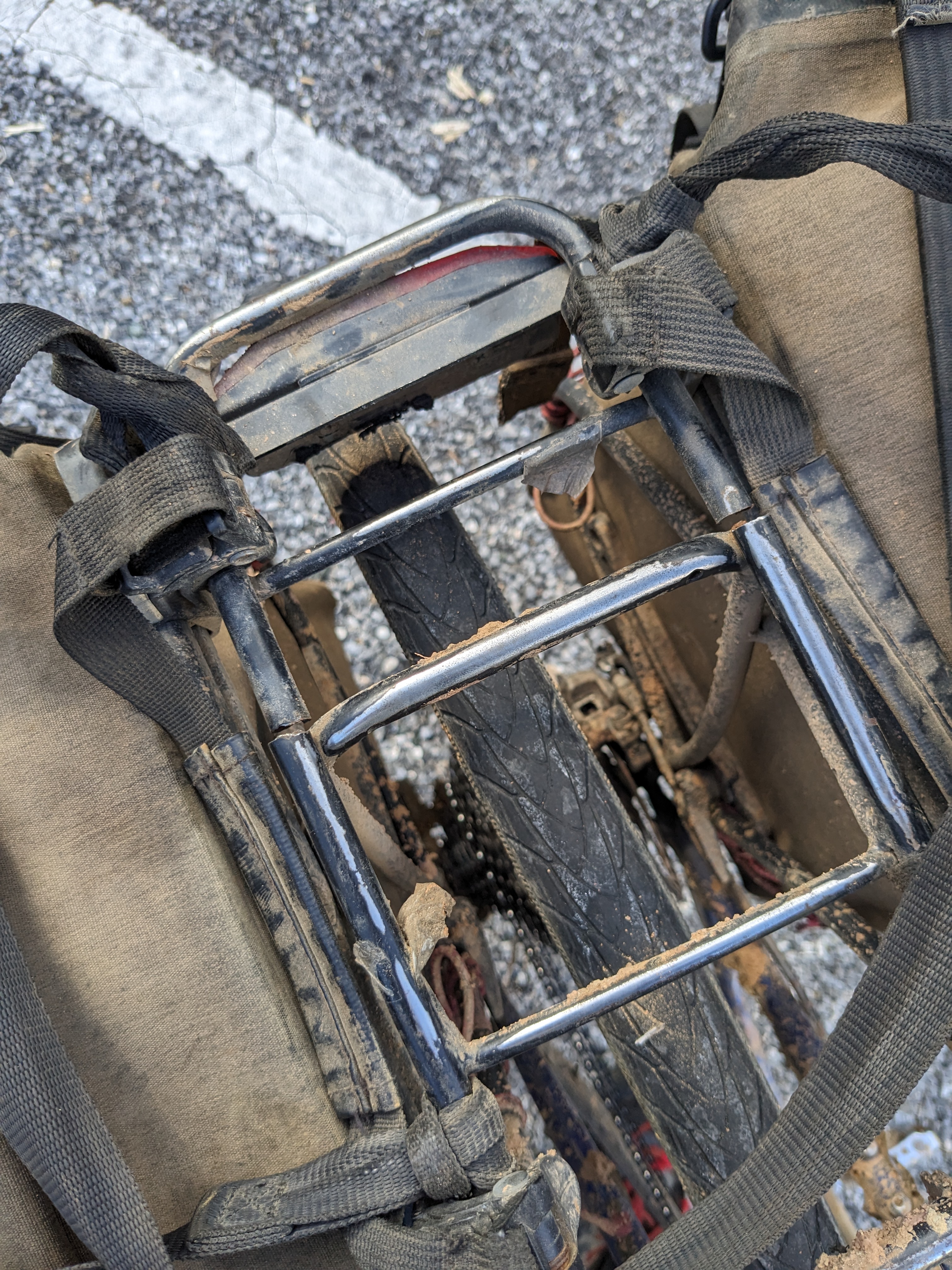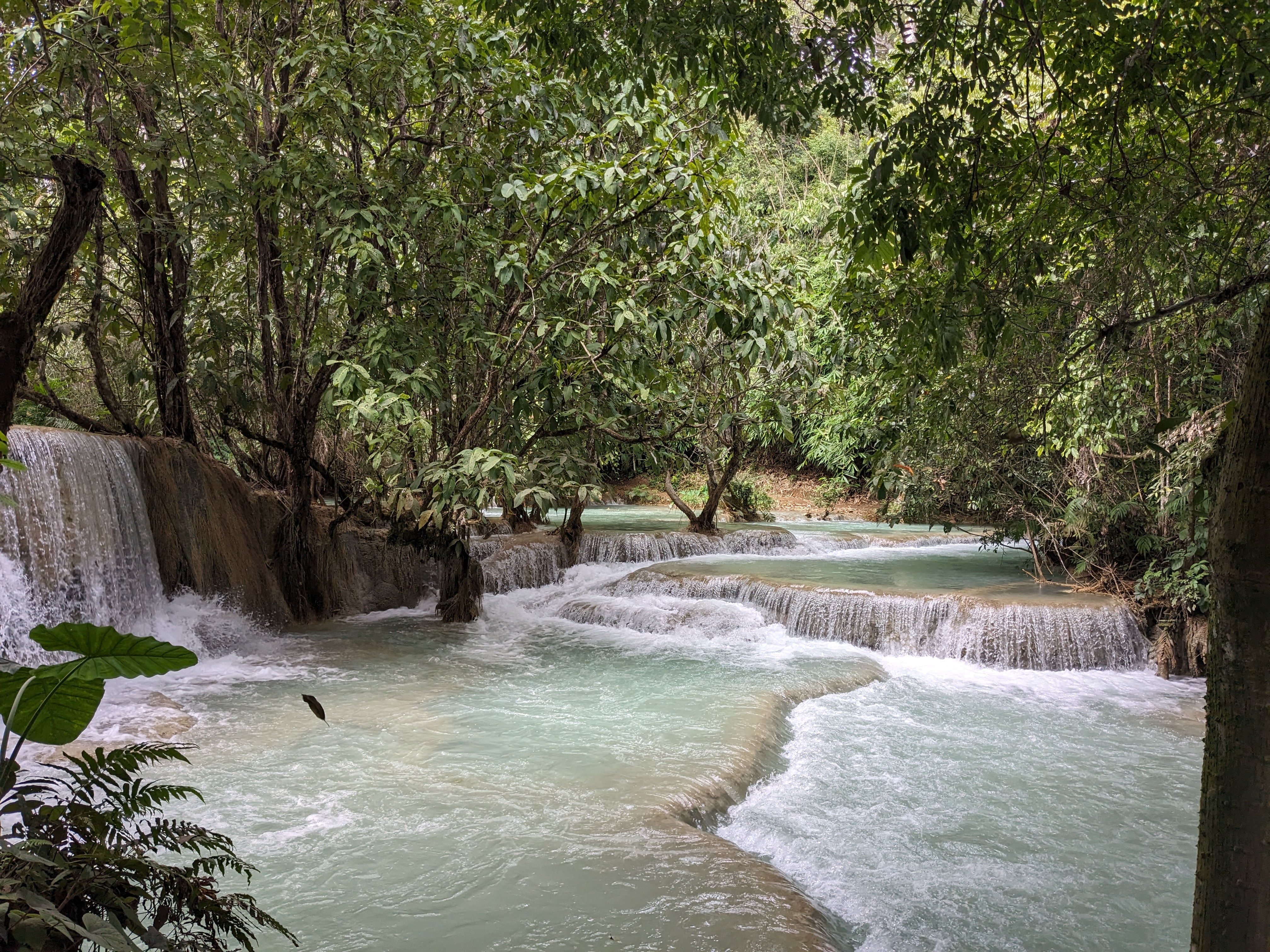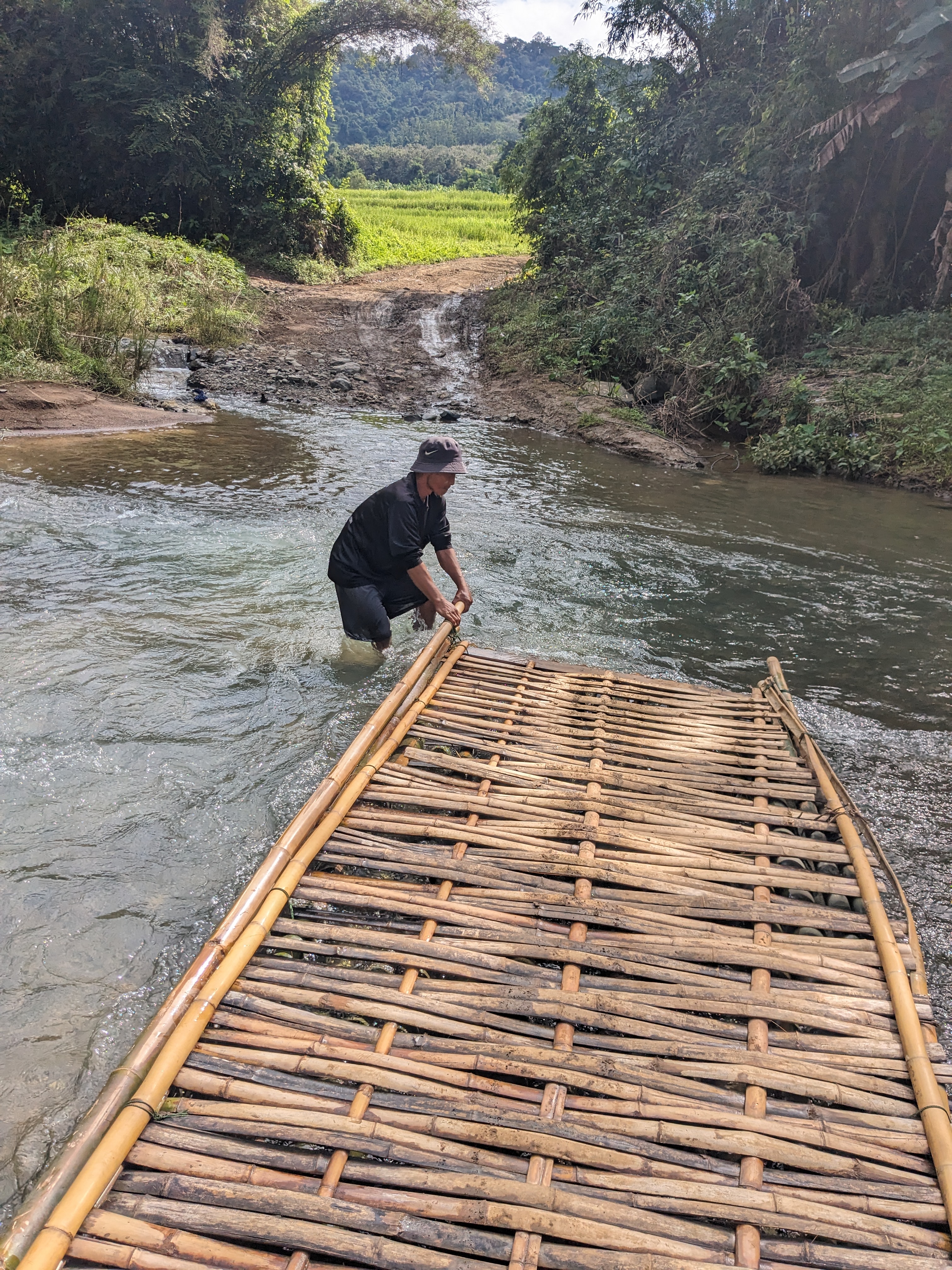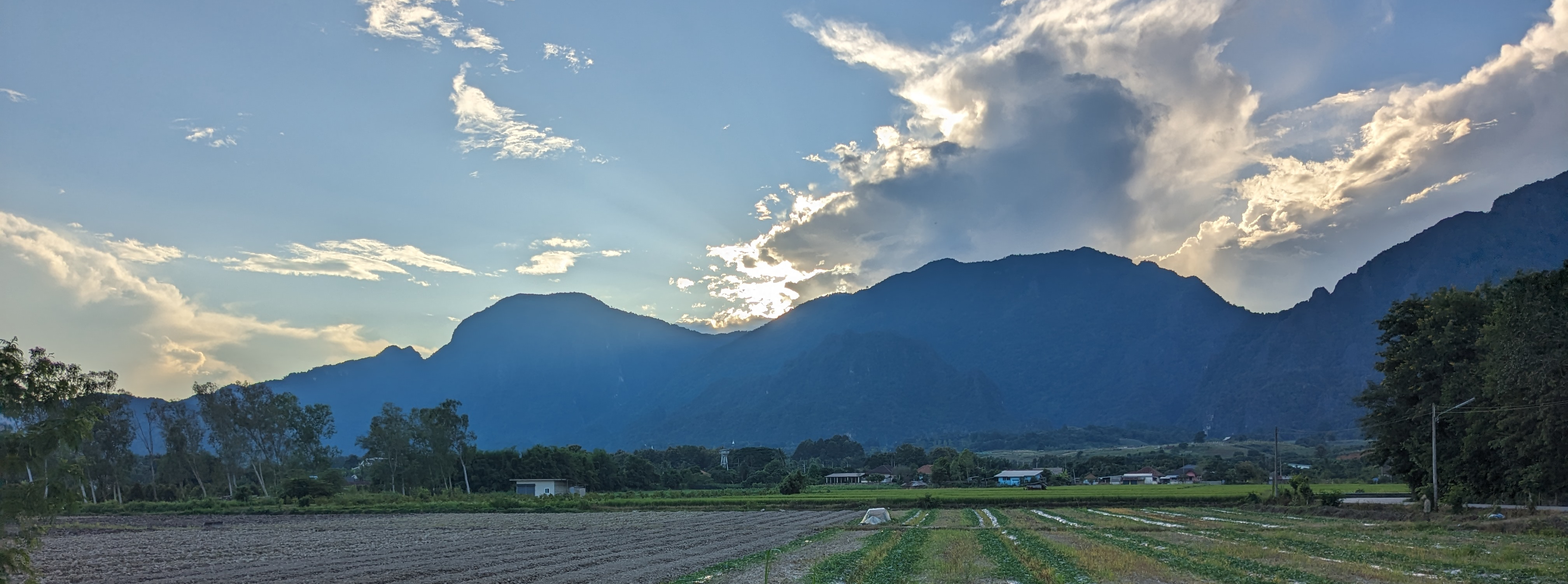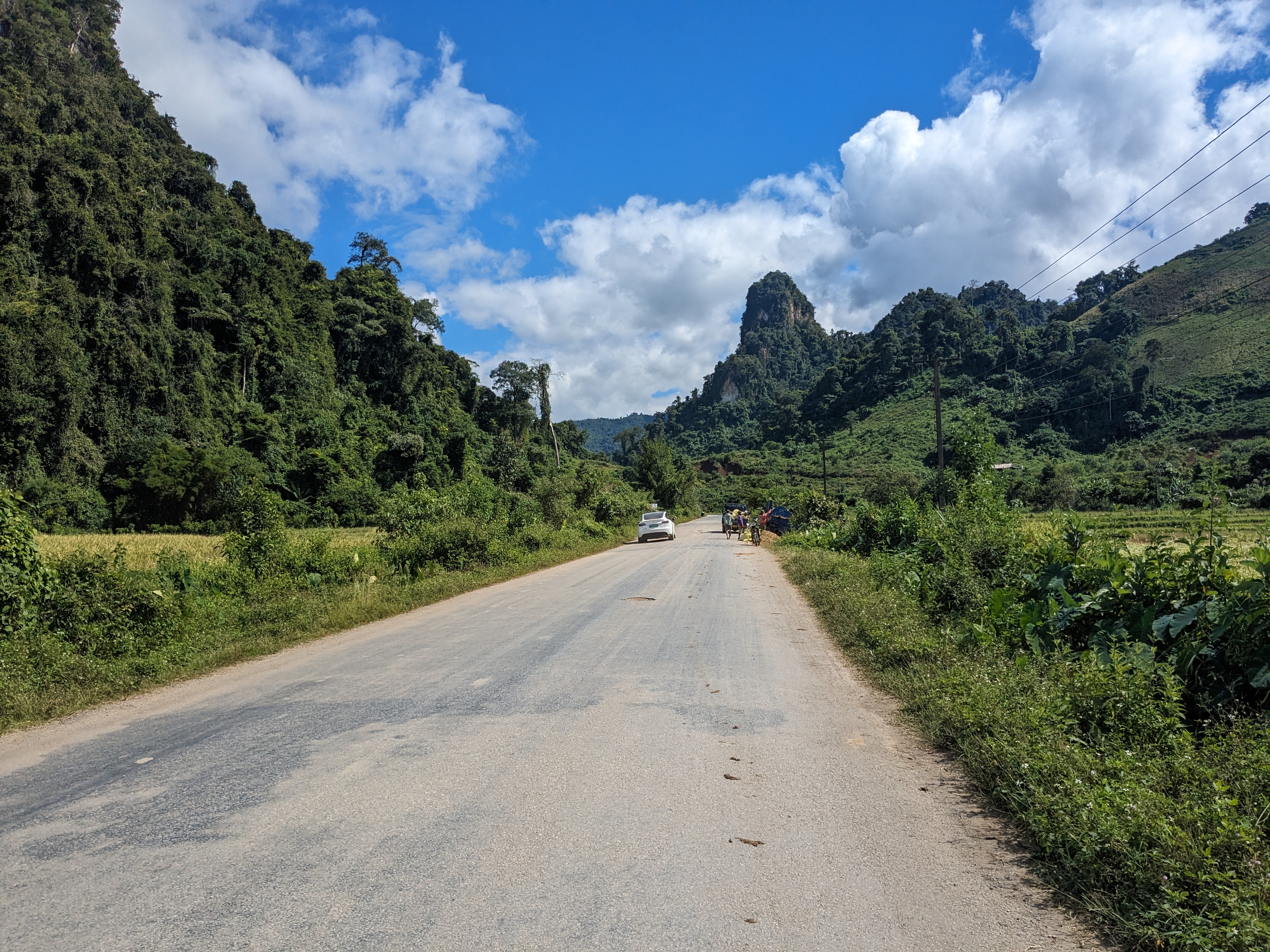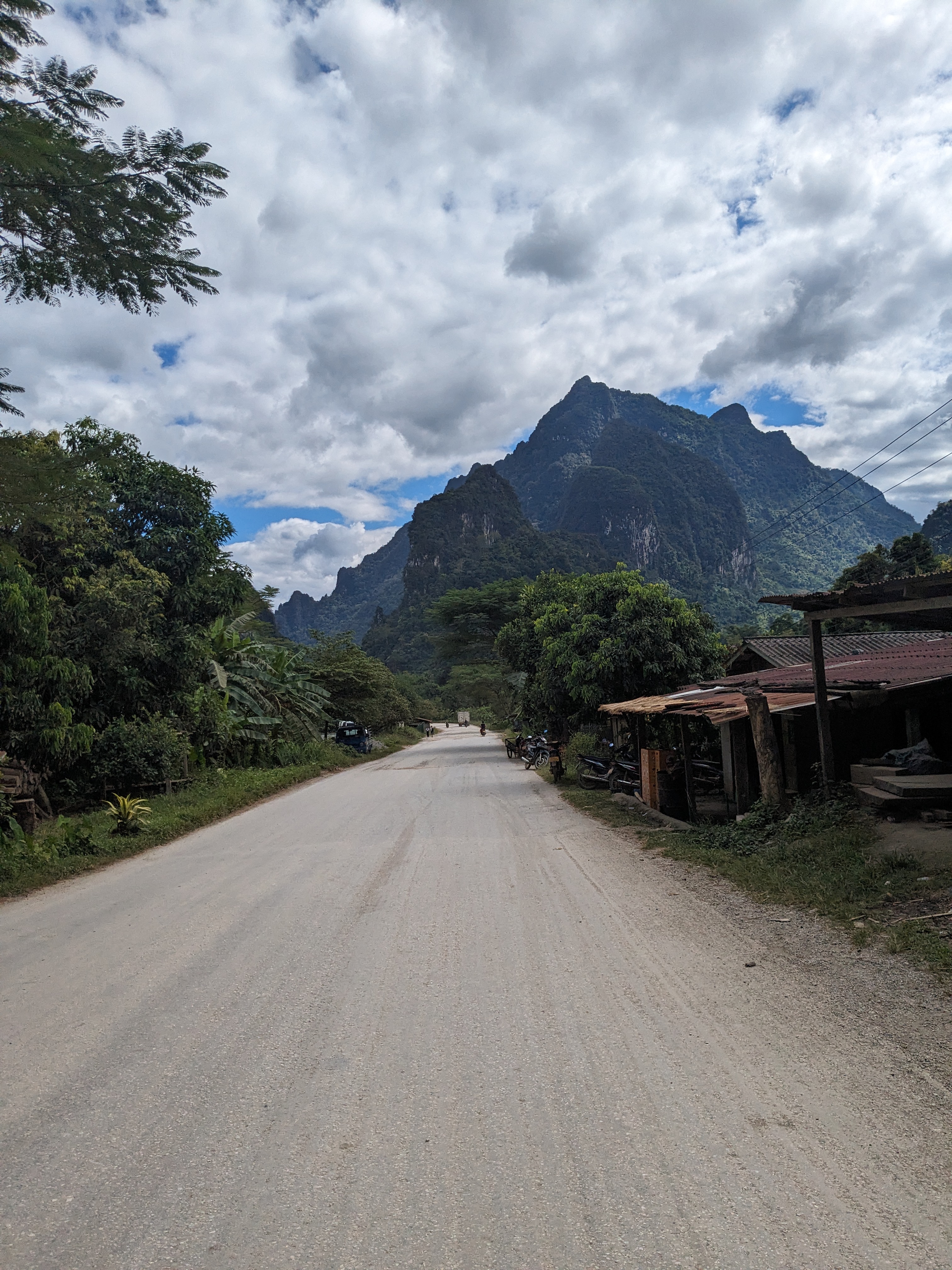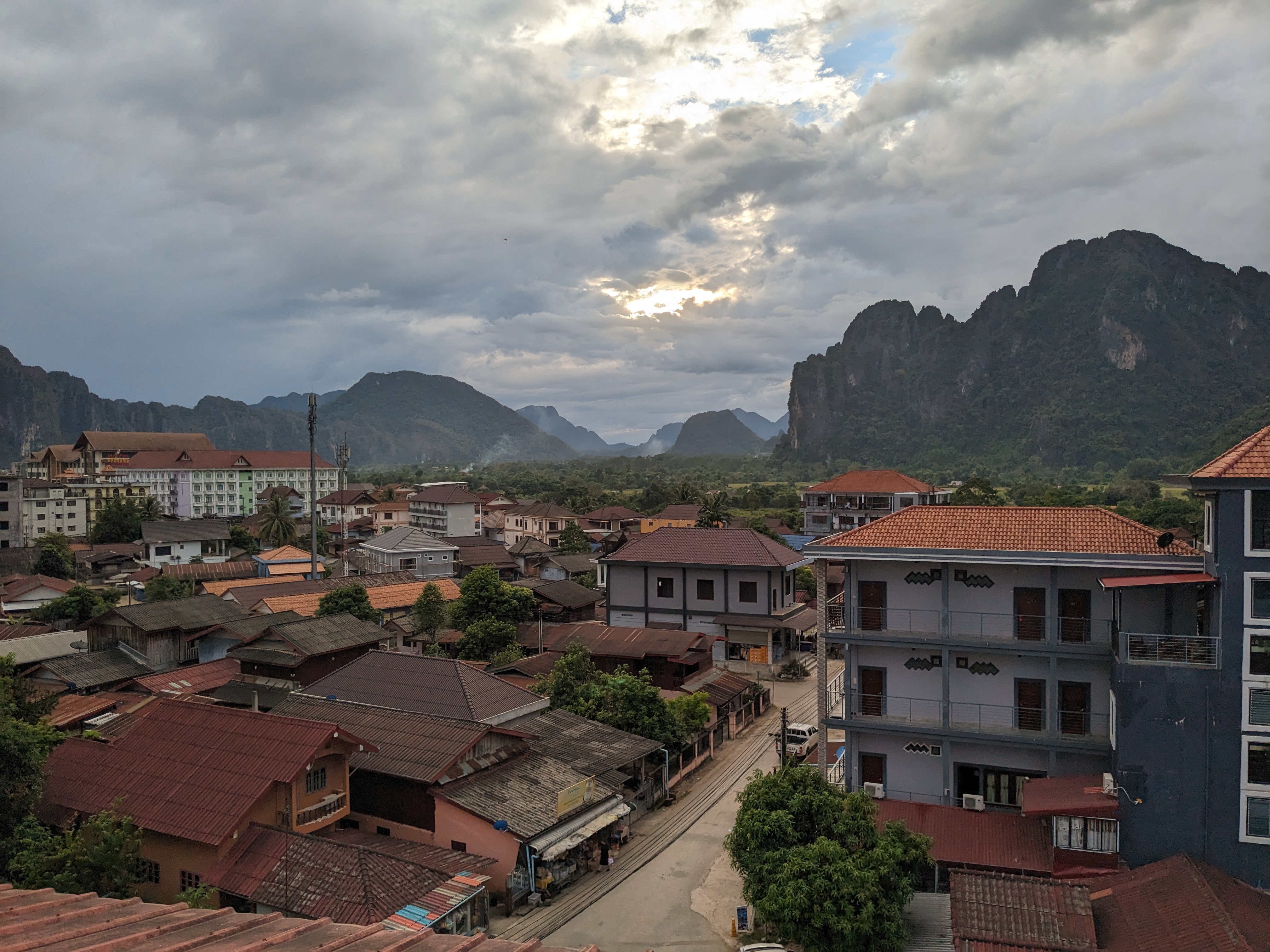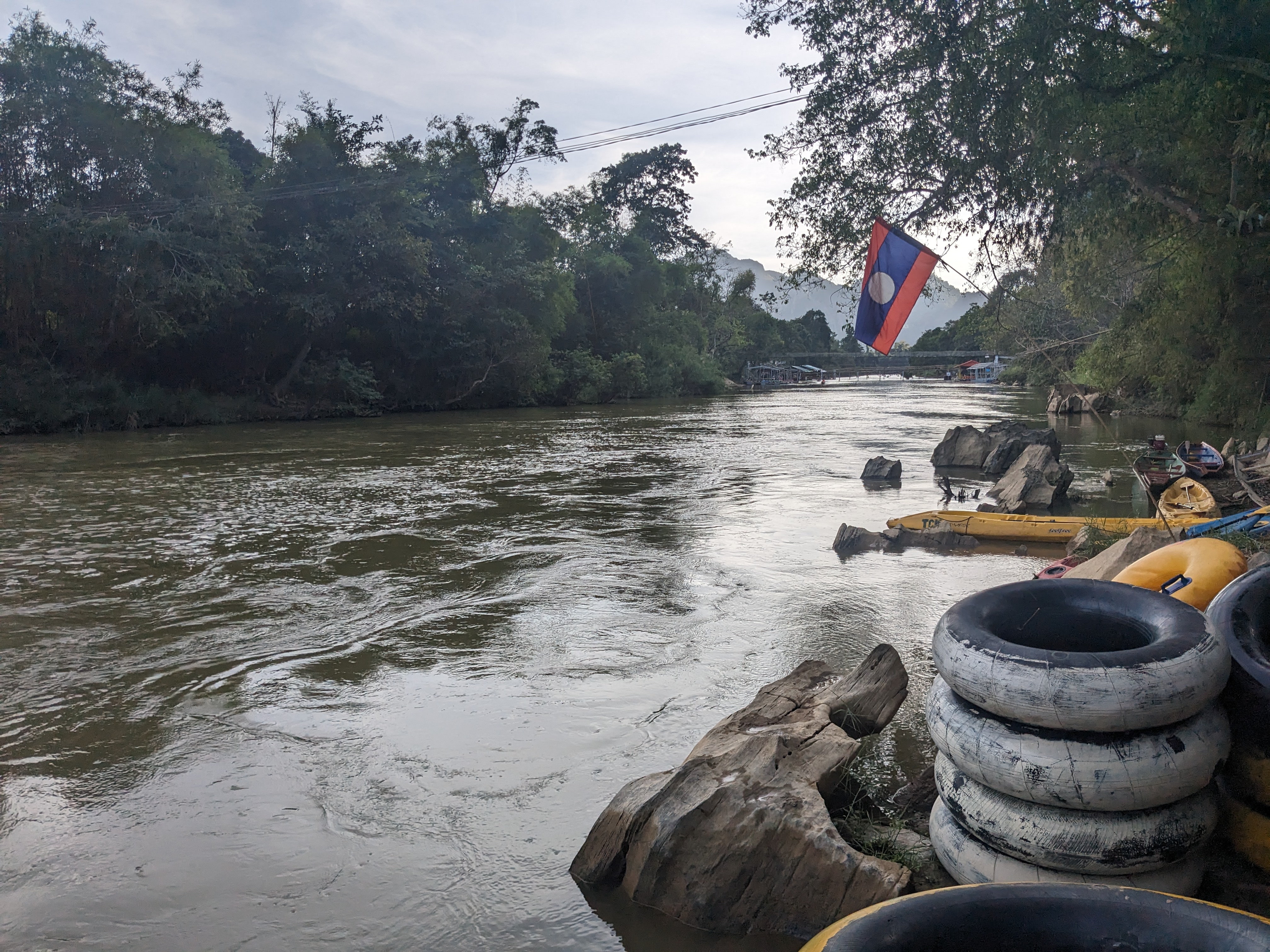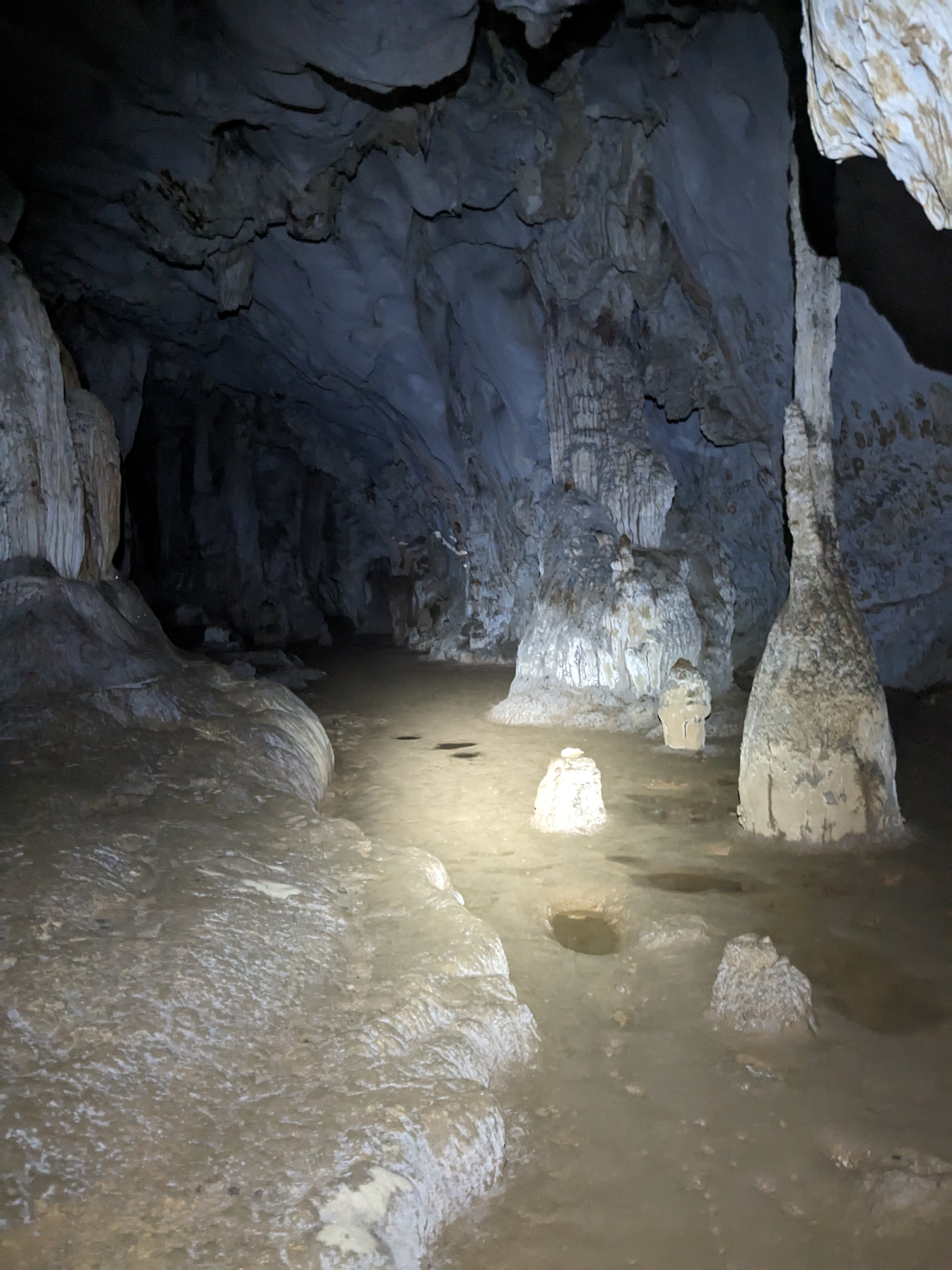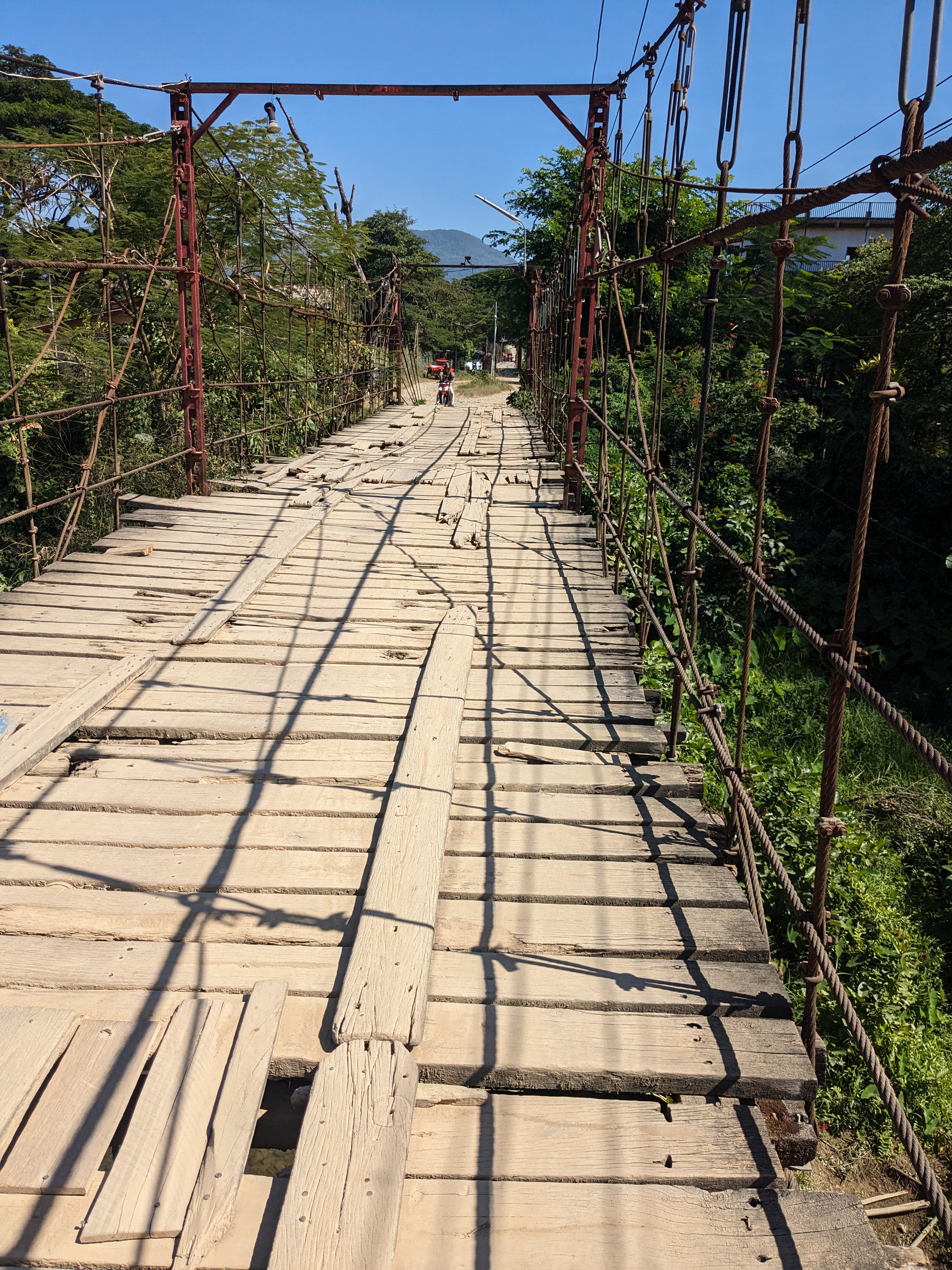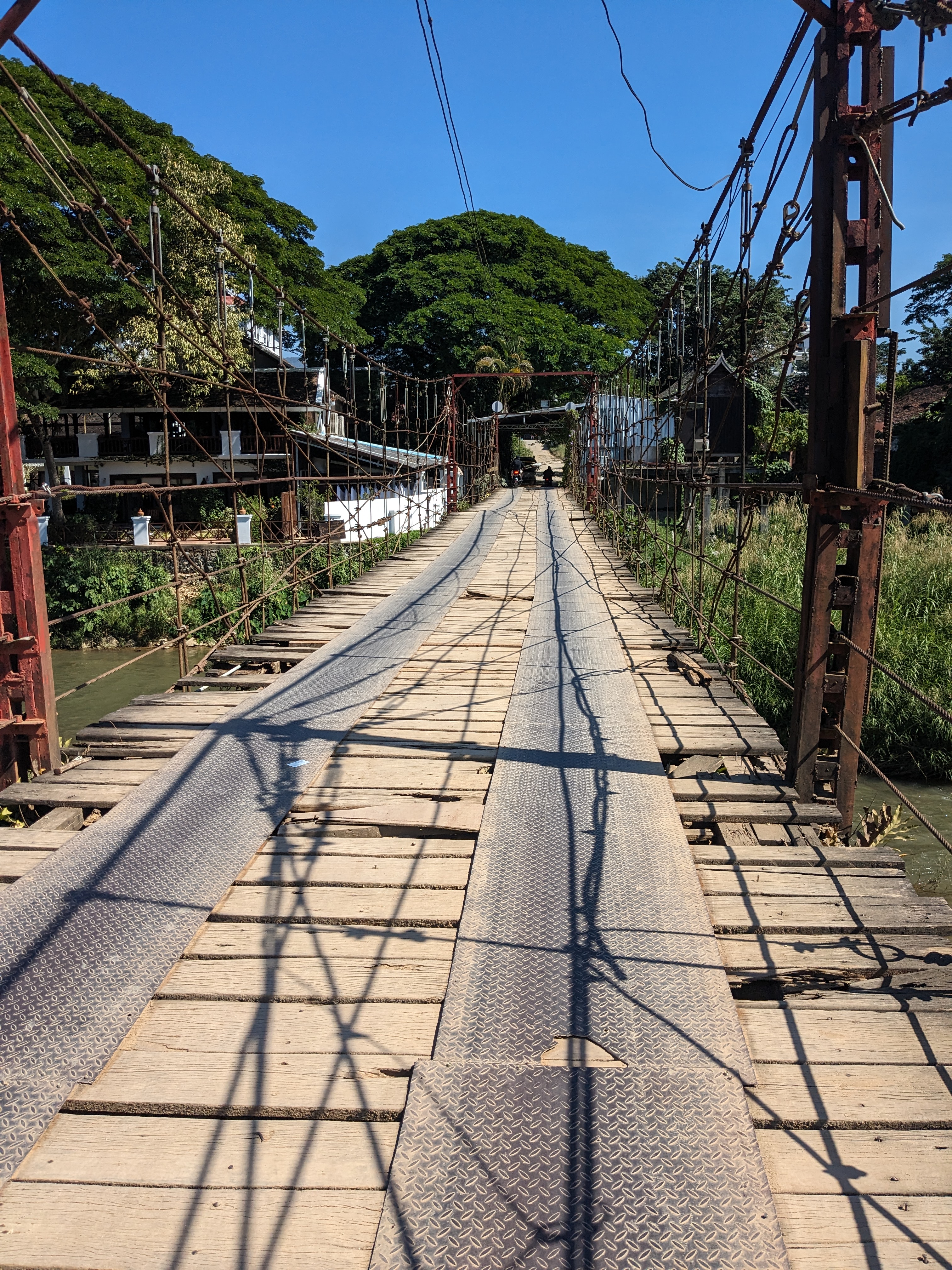Leaving Vang Vieng, I decided to chart the direct course towards Phonsavan, opting for small roads. The journey, however, became an unexpected dance with trucks thundering up and down this unpaved track. The night unfolded with a fantastic camping spot overlooking the valley, but the trucks continued through the night waking me up a few times.
In the morning, a picturesque mist veiled the valley, a sight that would become a recurring view in Laos. Despite the breathtaking spectacle, cycling through the mist proved tricky with limited visibility and poorly maintained roads.
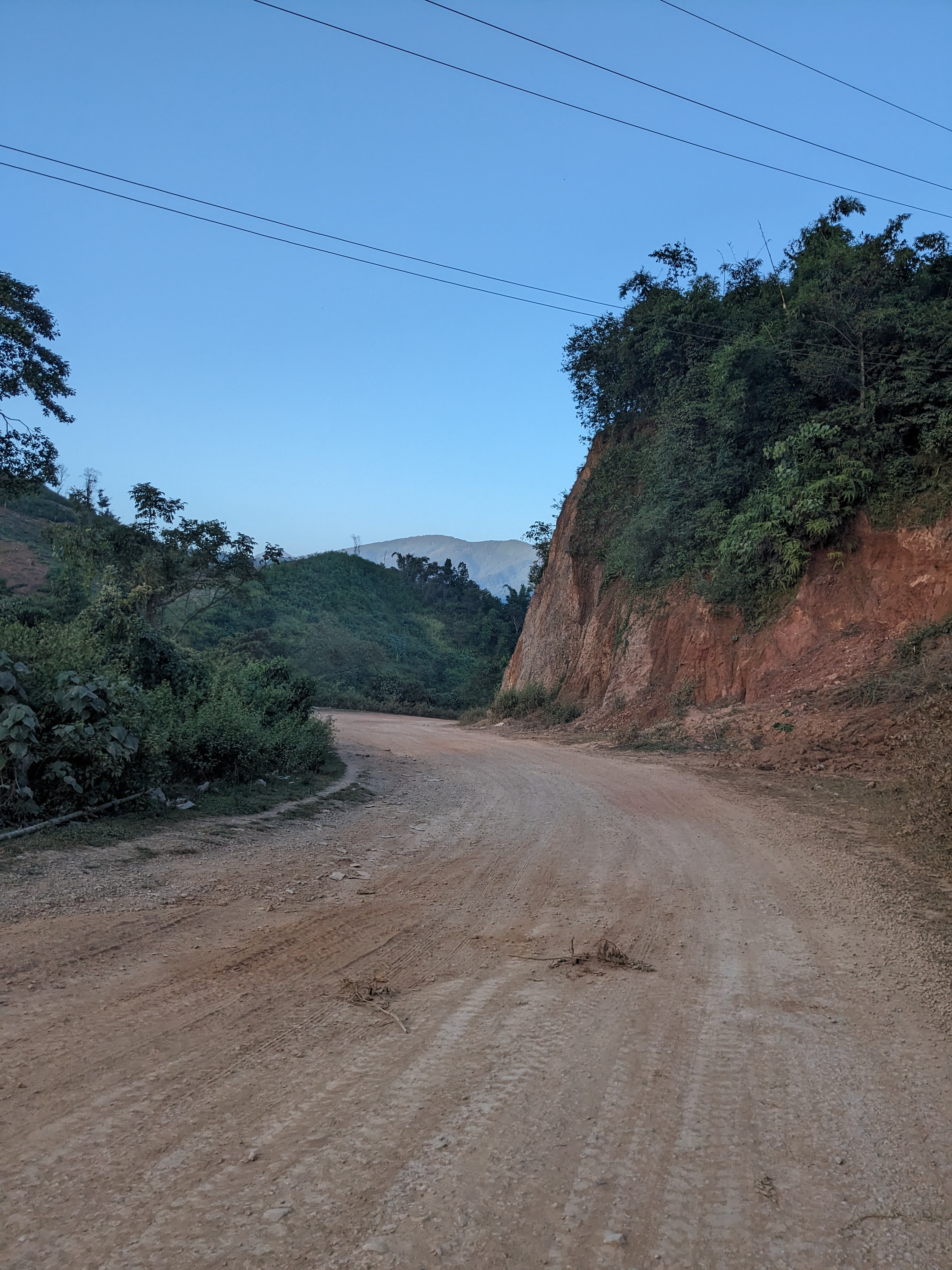



Persisting along the same road, I encountered deep mud roads for the first time on my trip. I was able to walk through it, but some of the trucks were stuck, their drivers seemingly nonchalant as they awaited rescue. In one instance, a generous driver shared food and water with me, finding me cycling this road quite entertaining (or at least more interesting that just waiting) .



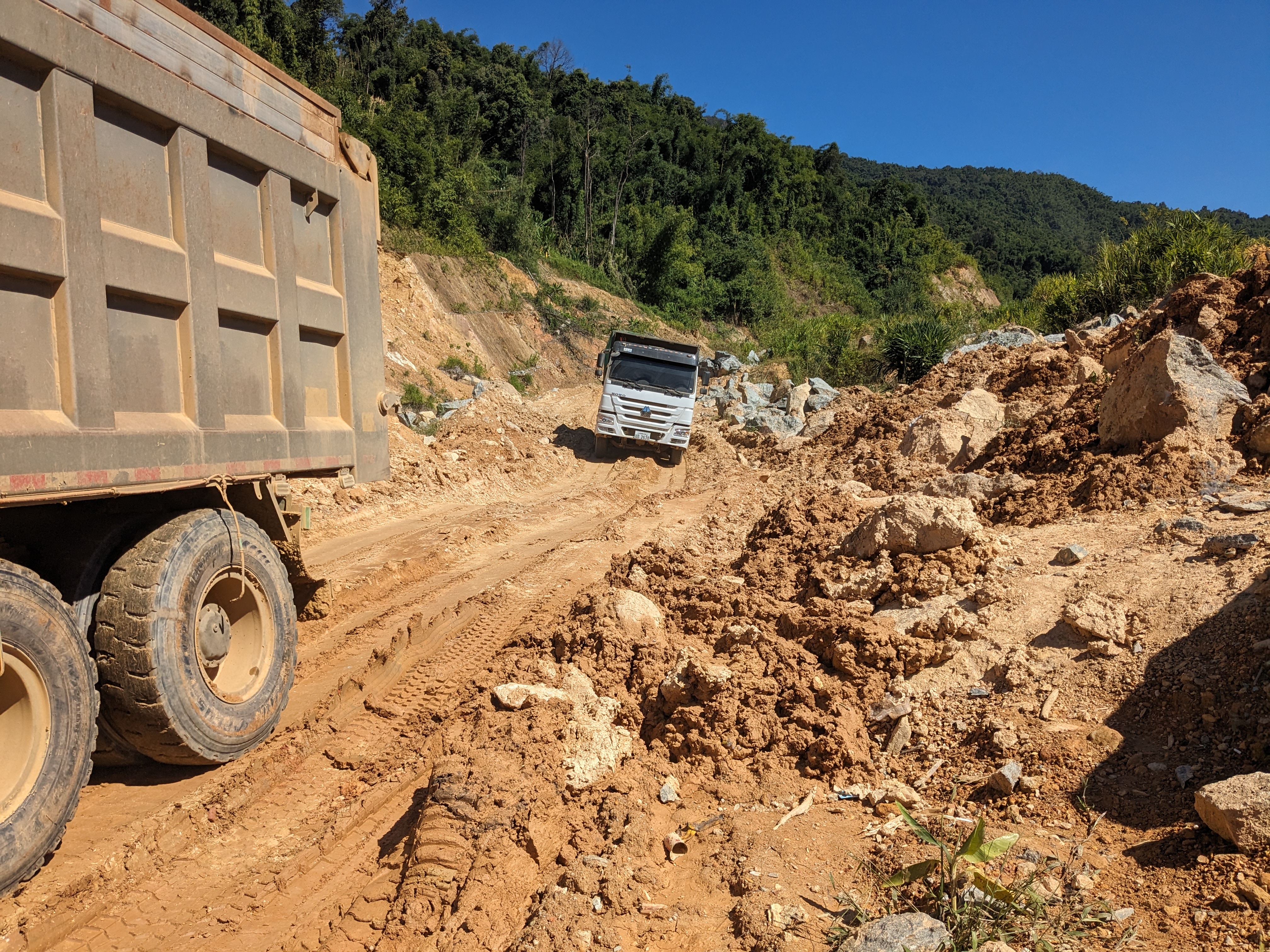
Next, the road turned from mud to dust, throwing up a cloud of dust anytime a vehicle would pass. A local on a motorbike stopped to give me a face mask to wear however, both me and my bike still became caked in a layer of dust.
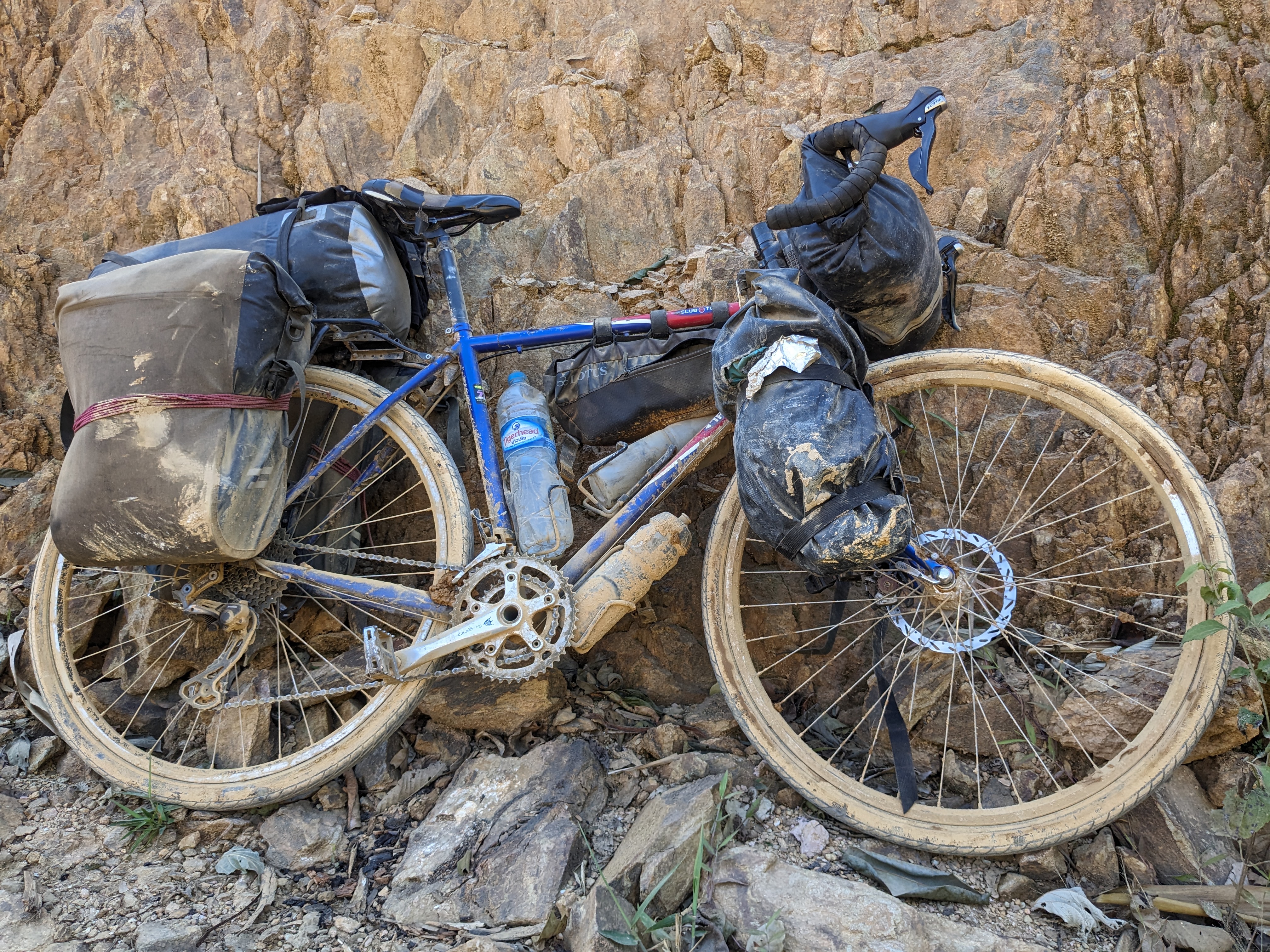
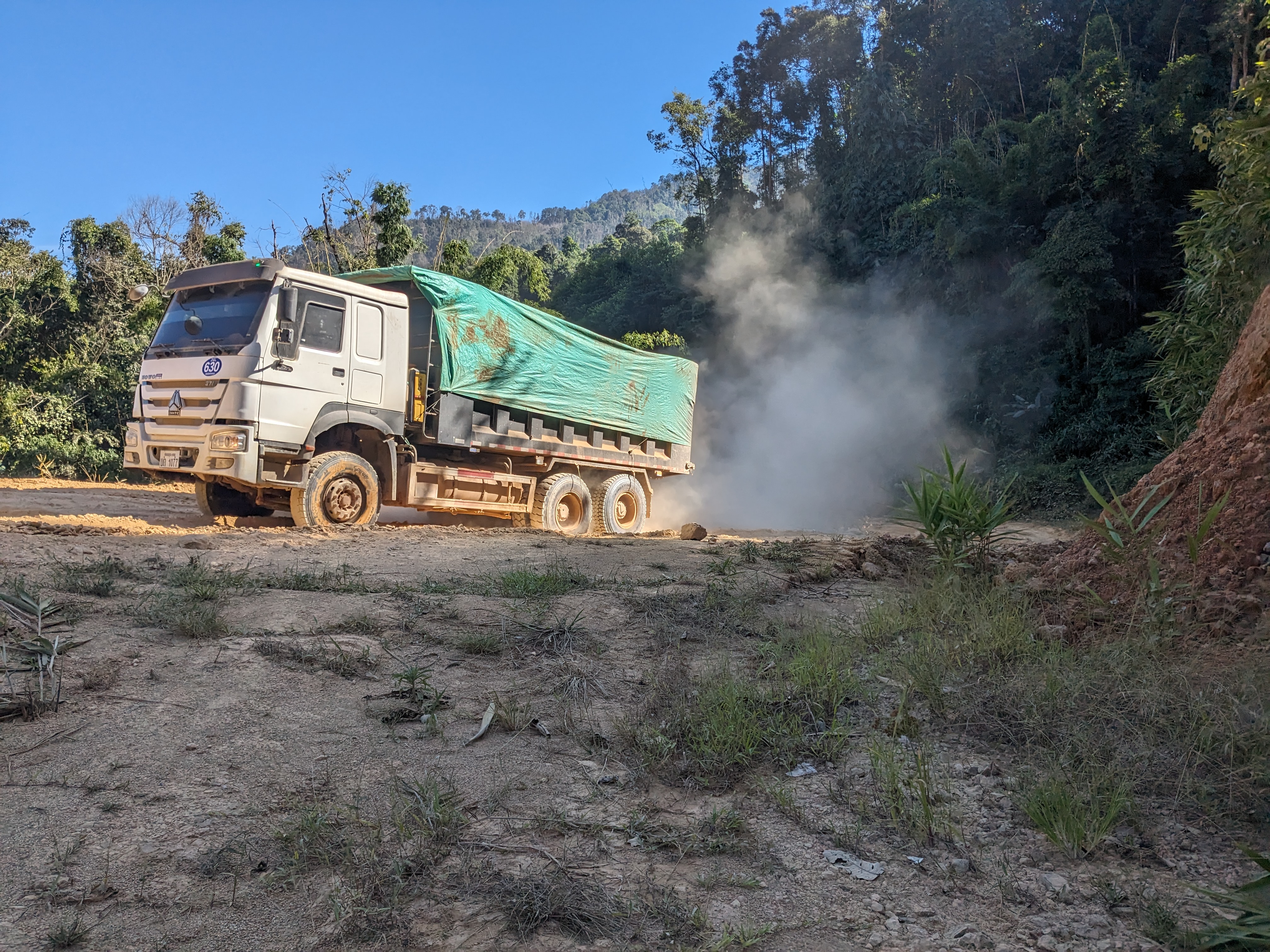


As evening fell, I was called over by some guys at a roadside bar and offered a BeerLao. This led to a shared meal of sticky rice and BBQ beef. One of them spoke enough English for us to communicate and explained they were miners, the trucks were coming from the mine and I could stay in their accommodation. After a short walk back to the accommodation we were stopped by security at the gate who said I couldn’t stay. Fortunately, the security guards offered for me to camp with them and I shared another meal then set my tent up in their shelter complete with electricity!




With improved roads, the next day marked smoother progress. Cycling through Long Chien, a village with a history as a former secret CIA airbase, added a layer of intrigue to the journey. What was at one point the second largest city in Laos, was now just another town but with a runway through the middle of it.

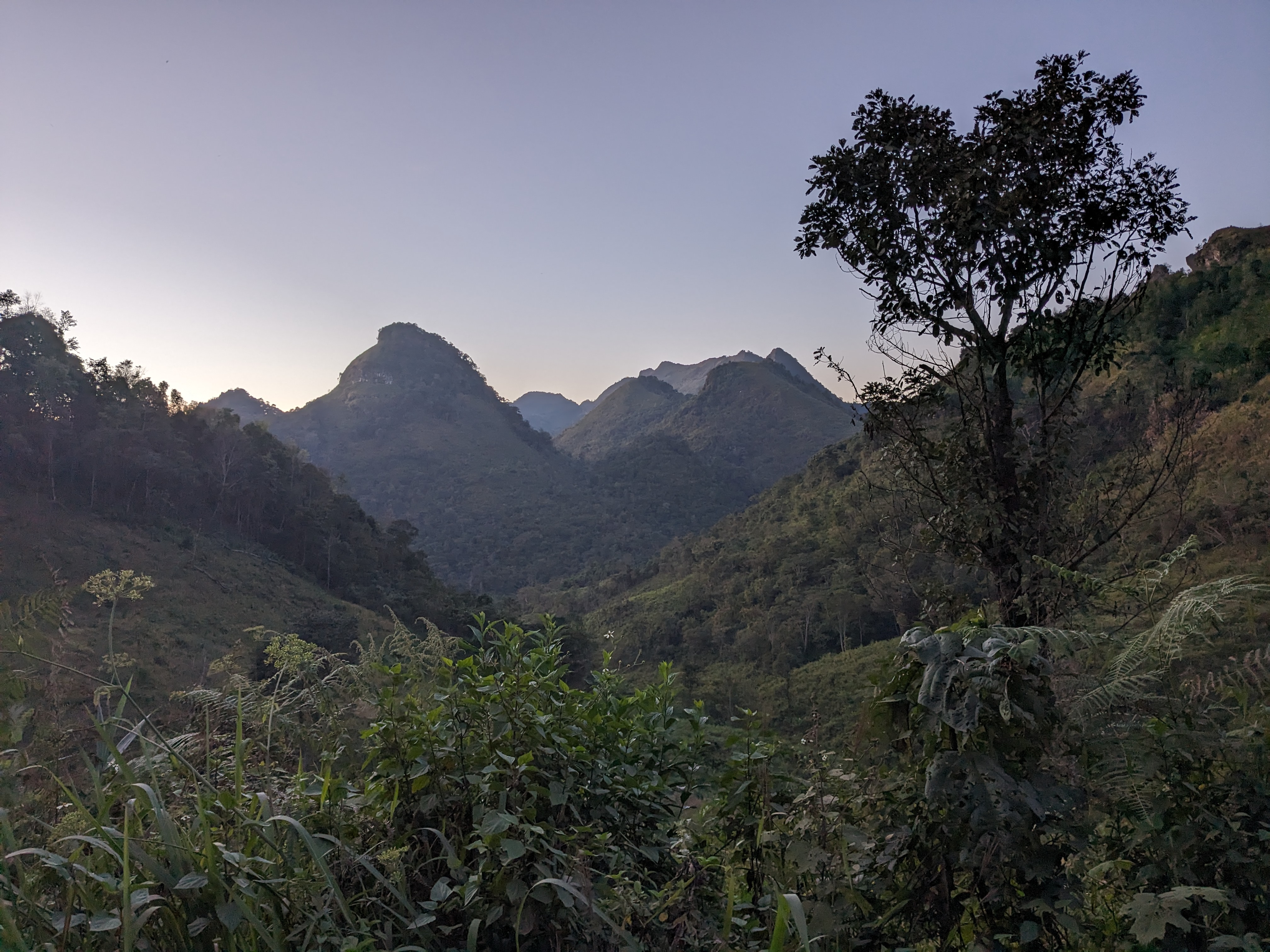
Reaching Phonsavan, I visited the enigmatic Plain of Jars, a UNESCO World Heritage site shrouded in mystery and wartime scars. It was a fascinating place featuring thousands of stone jars dating back to the Megalithic period and has stumped archaeologists as to why they were made. The site was heavily bombed during the Laos civil war as it was an area of strategic importance due to it being the highest hill around. This added to the sight as the bomb creators remain as a reminder to this event.




The journey continued on busier roads through towns adorned with communist flags something I hadn’t seen so far in Laos dispite it being a communist country. I quickly realised why they were so prominent here when I arrived at the Tham Piew cave. On 24th November 1968, 374 civilians were sheltering in the cave when the US launched a rocket at the cave killing everyone. It is a tragic story and was interesting how at the associated museum all the exhibits very explicitly blamed the US. I was there just 2 days before the anniversary, so there was a festival in action making me feel very out of place.

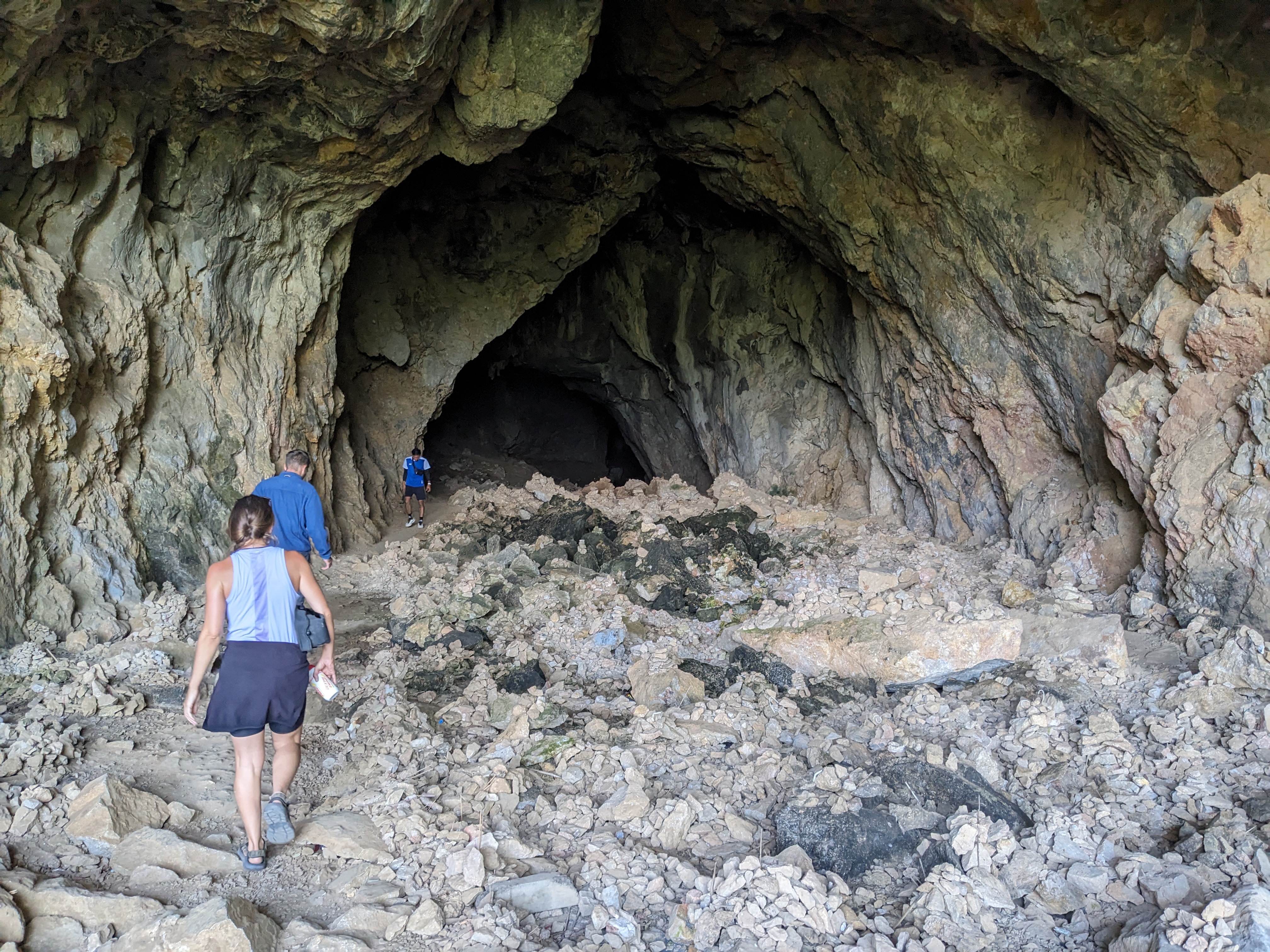
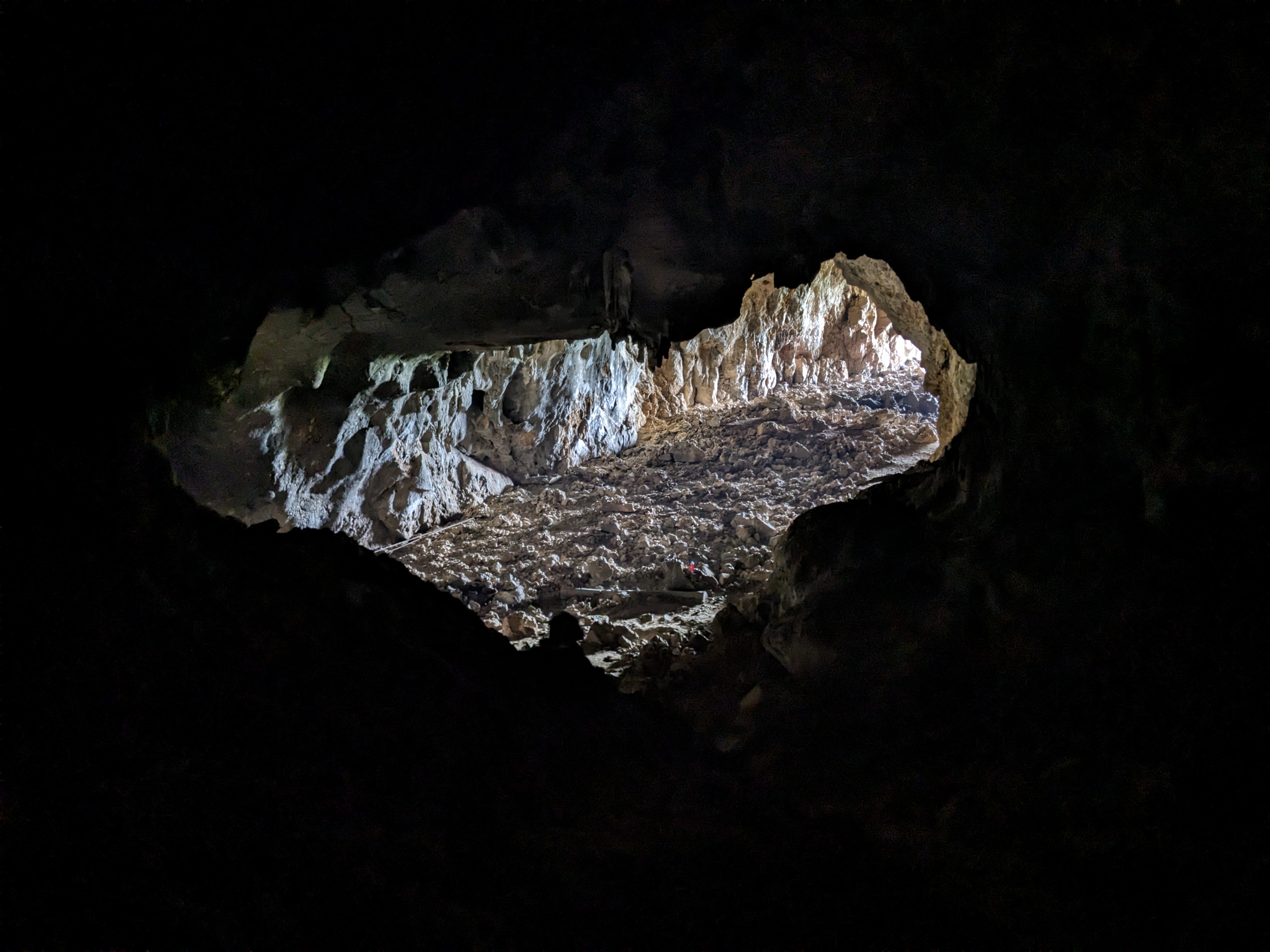

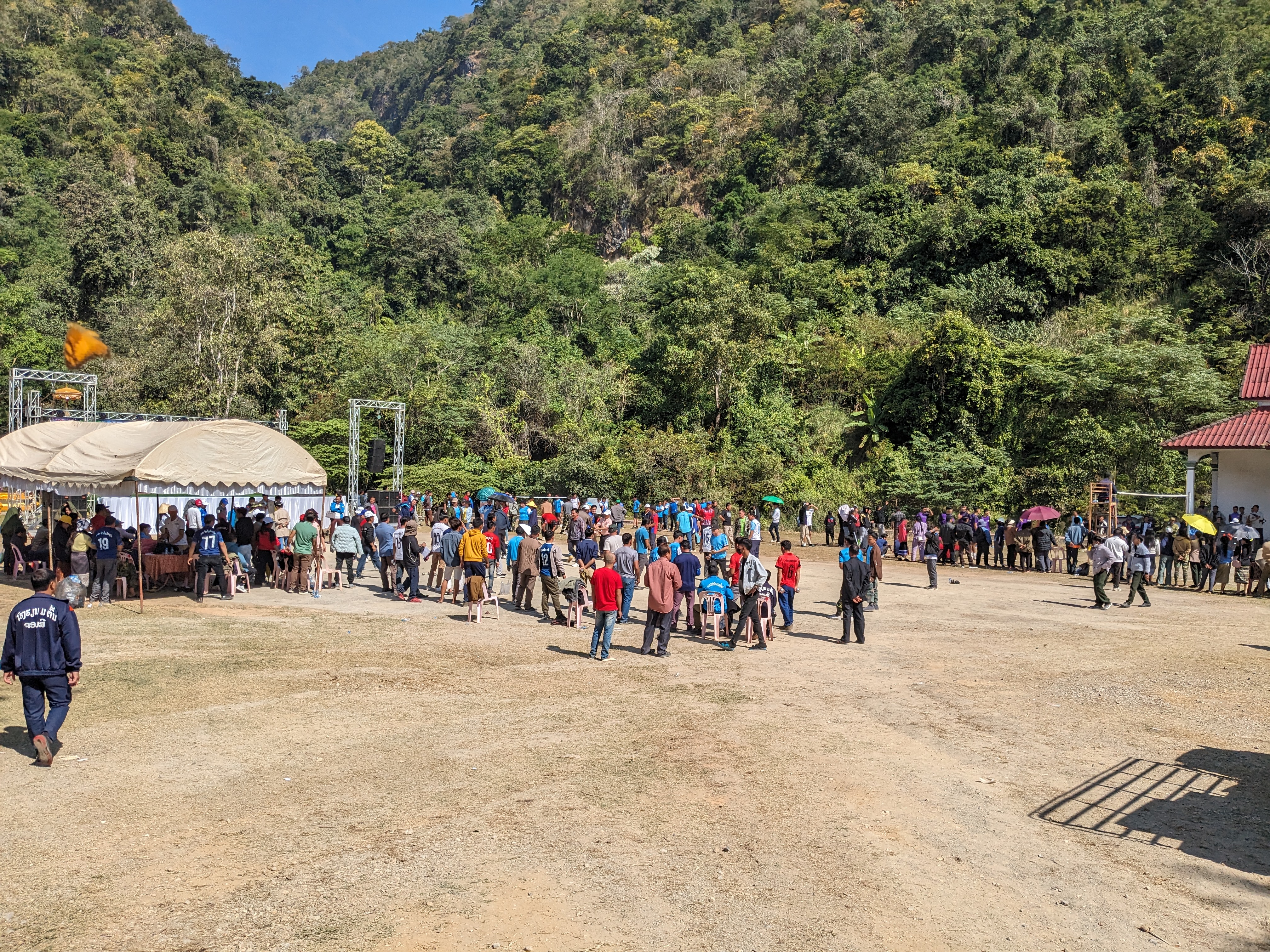
The final stretch in Laos unfolded along the C1 road, offering captivating campsites on hilltops, abandoned roads and by rivers. Each tiny village brought its unique charm, often with friendly children waving enthusiastically. In one, I was offered beer at 11am and still having the student mindset didn’t want to turn down a free drink!



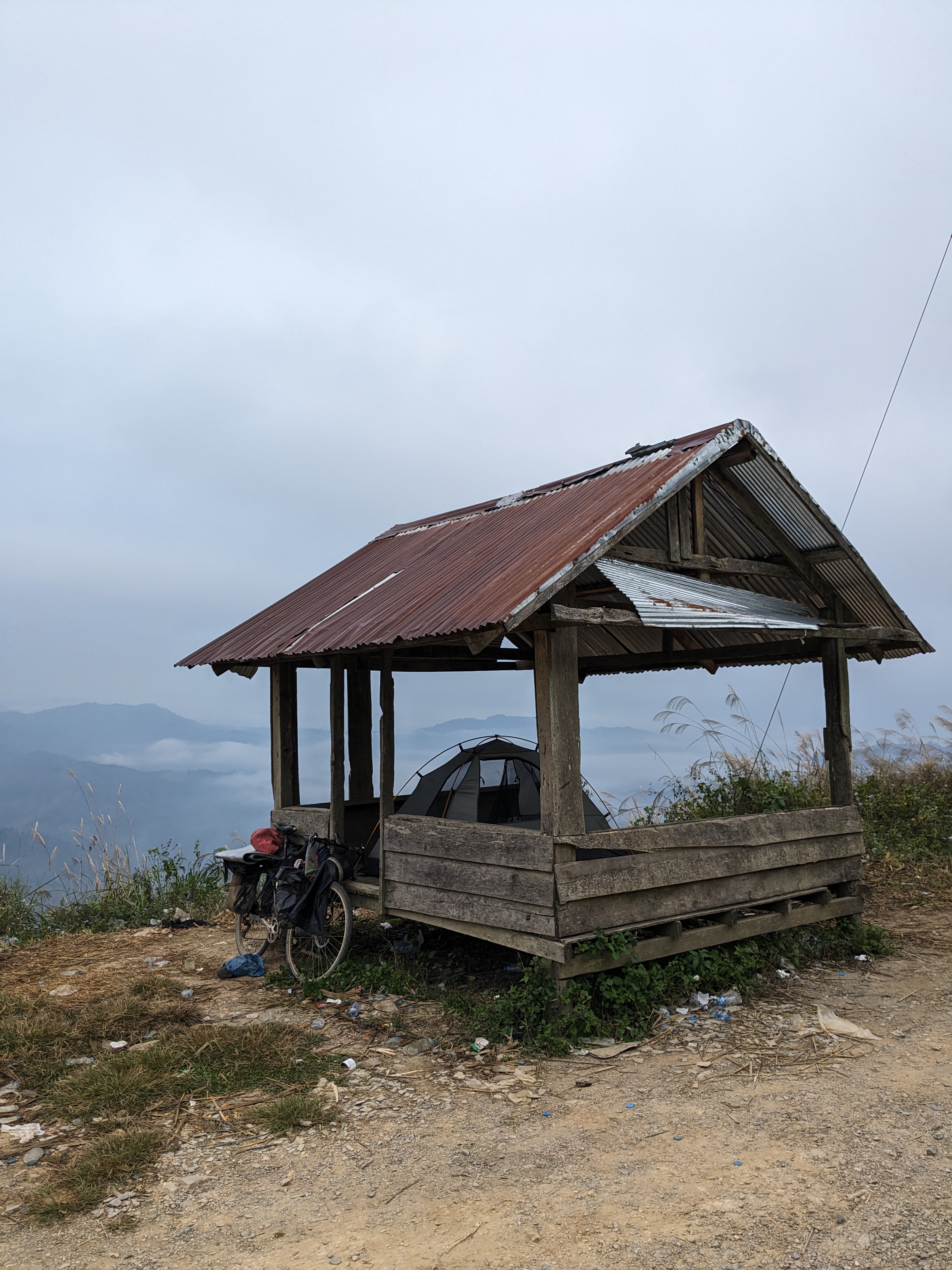

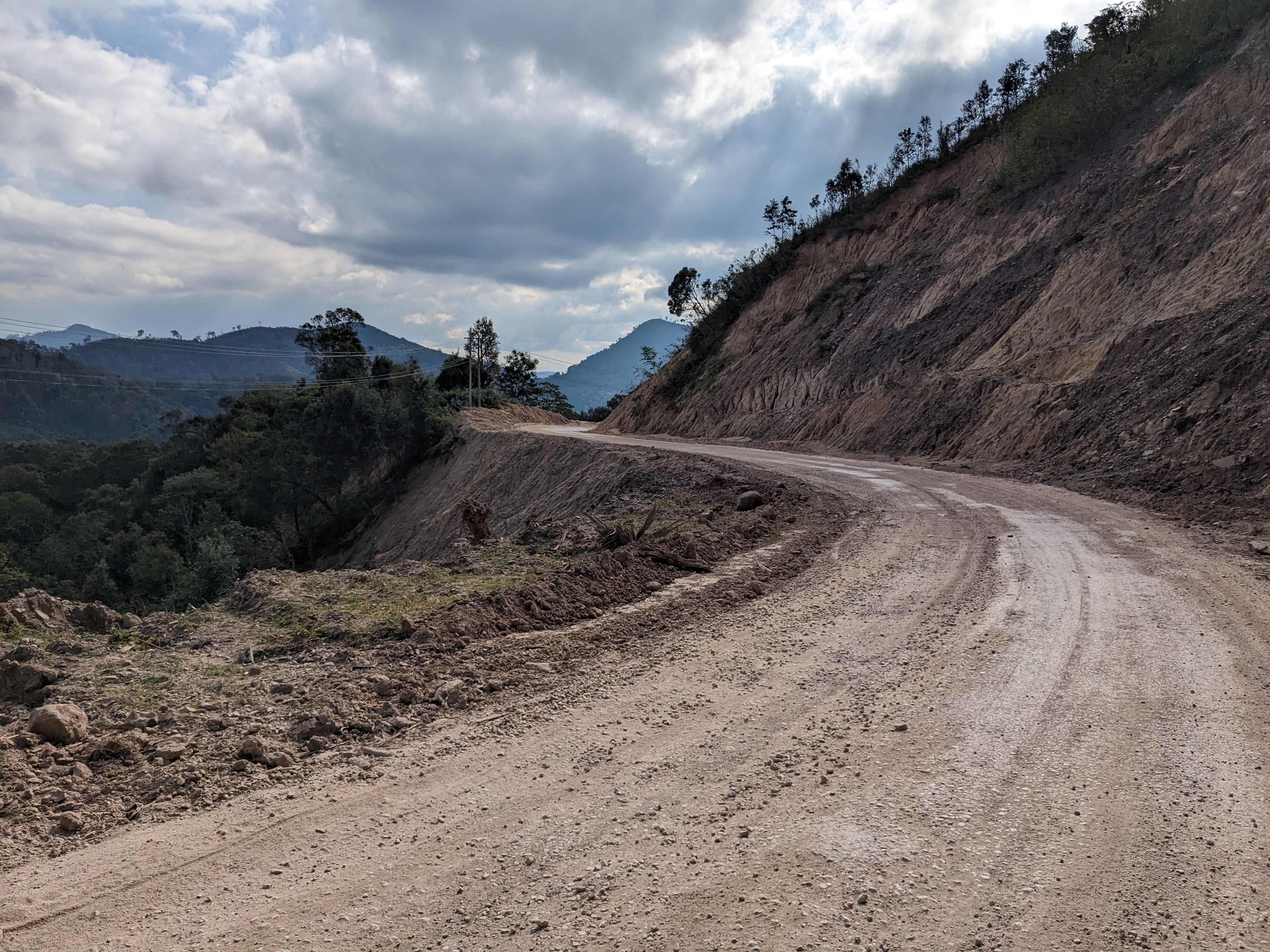
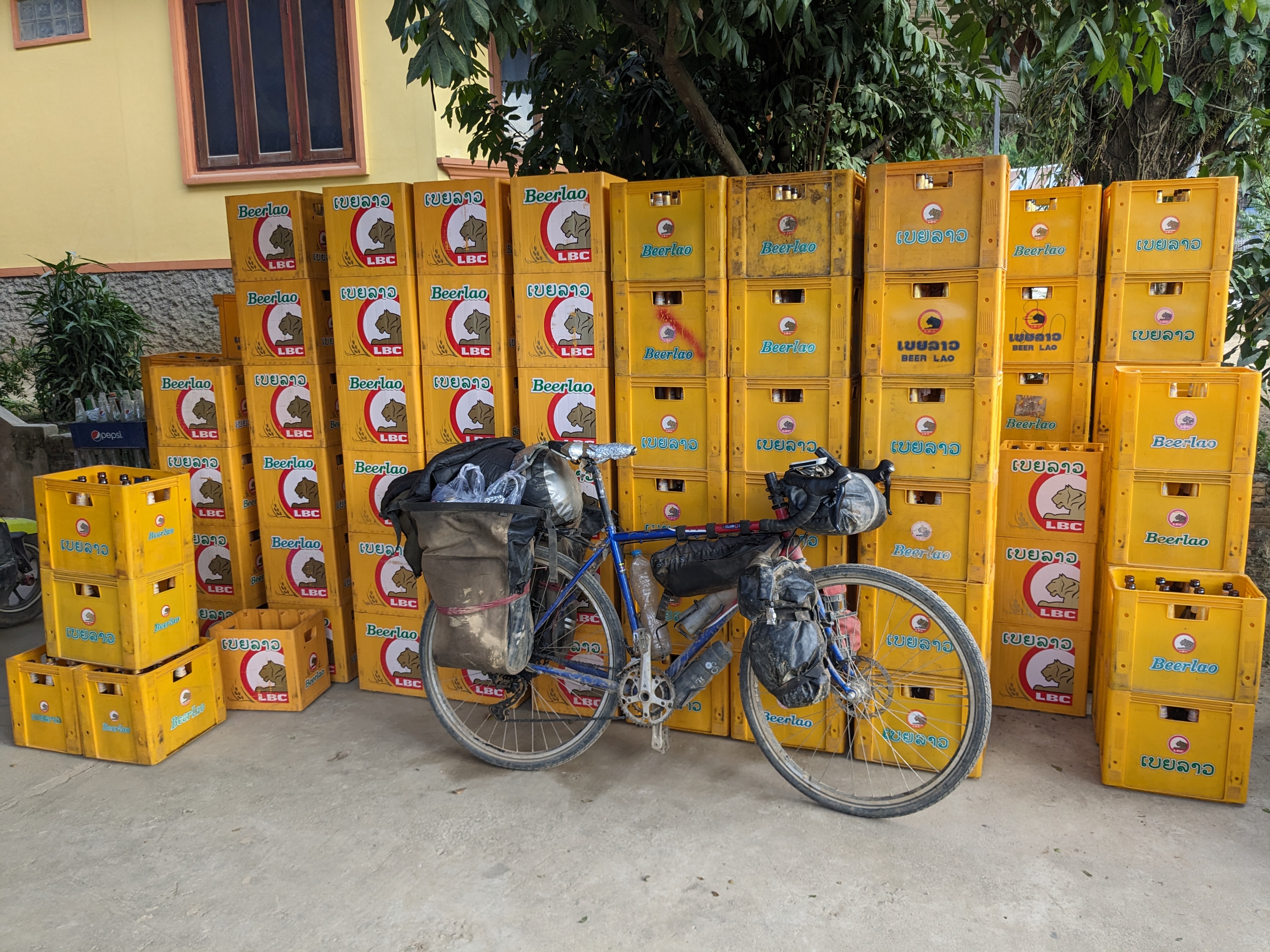
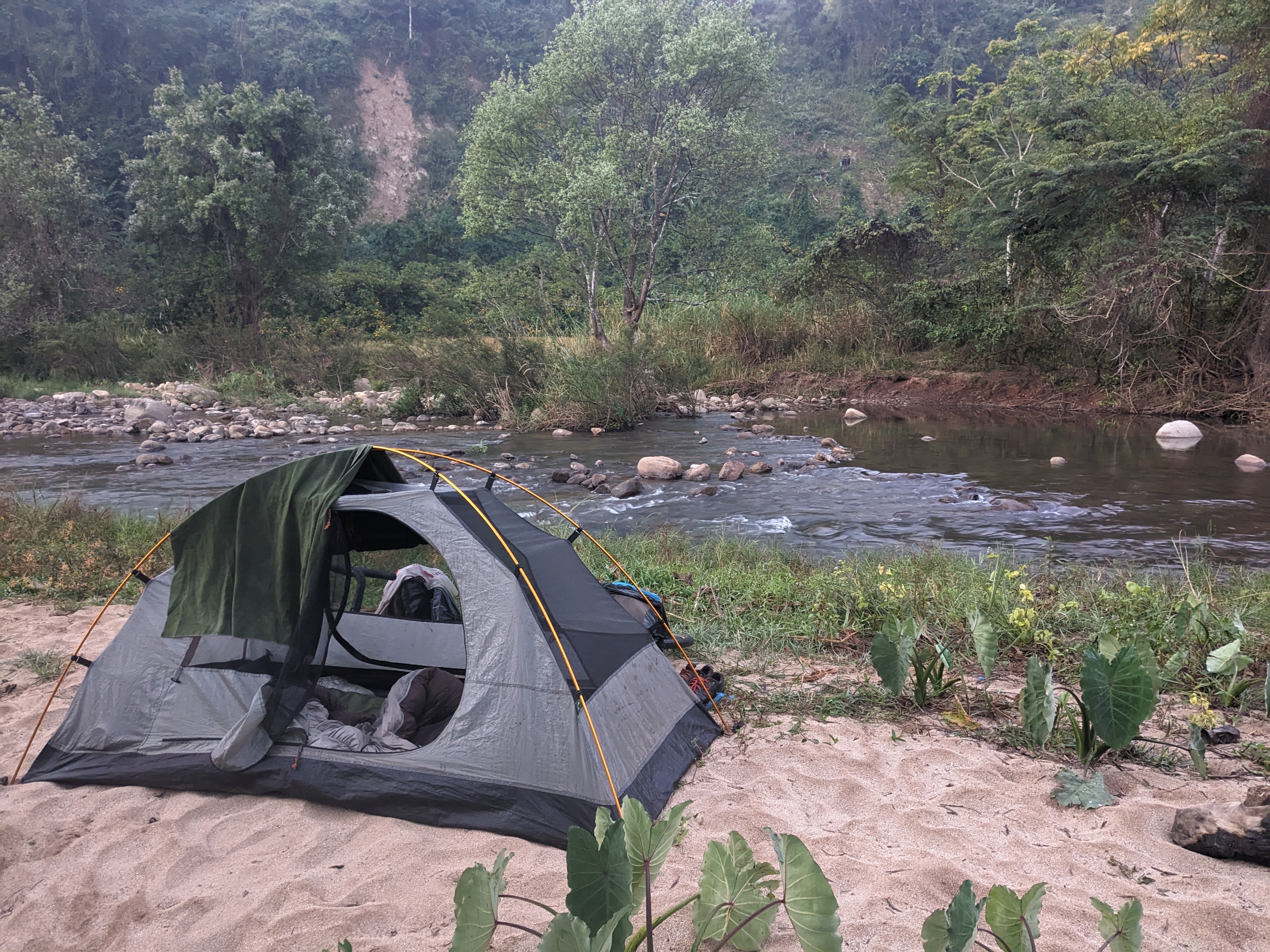
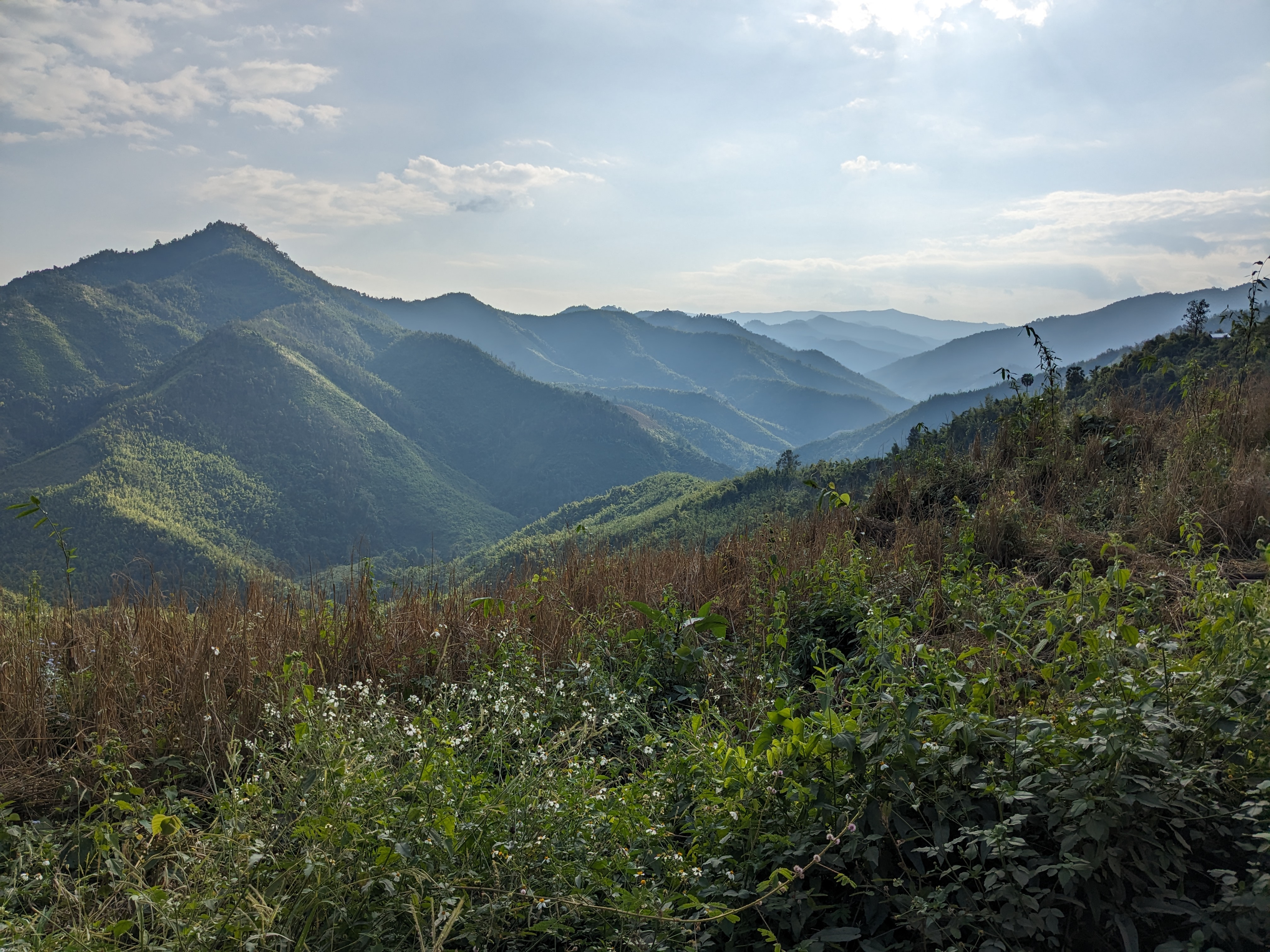
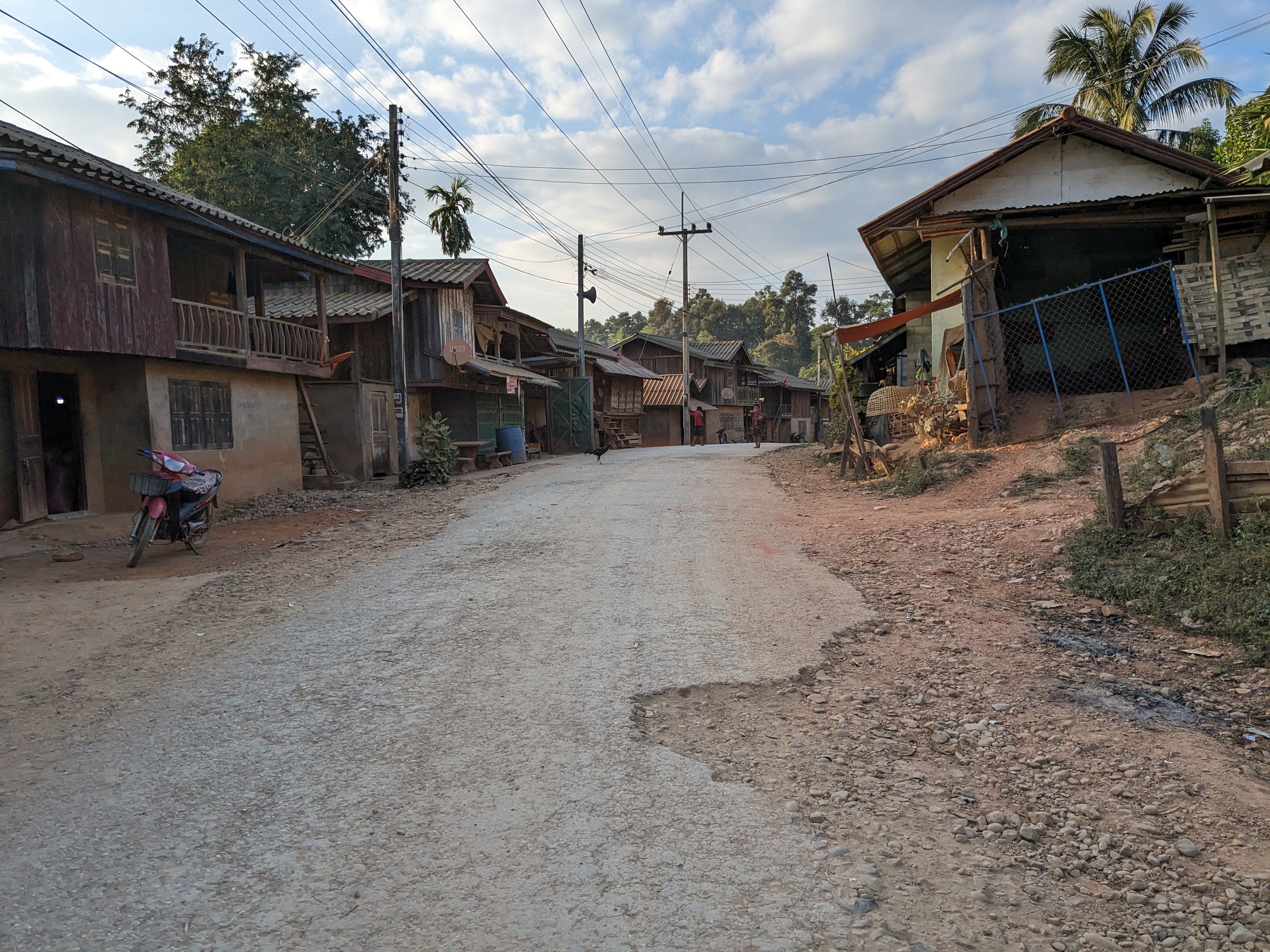
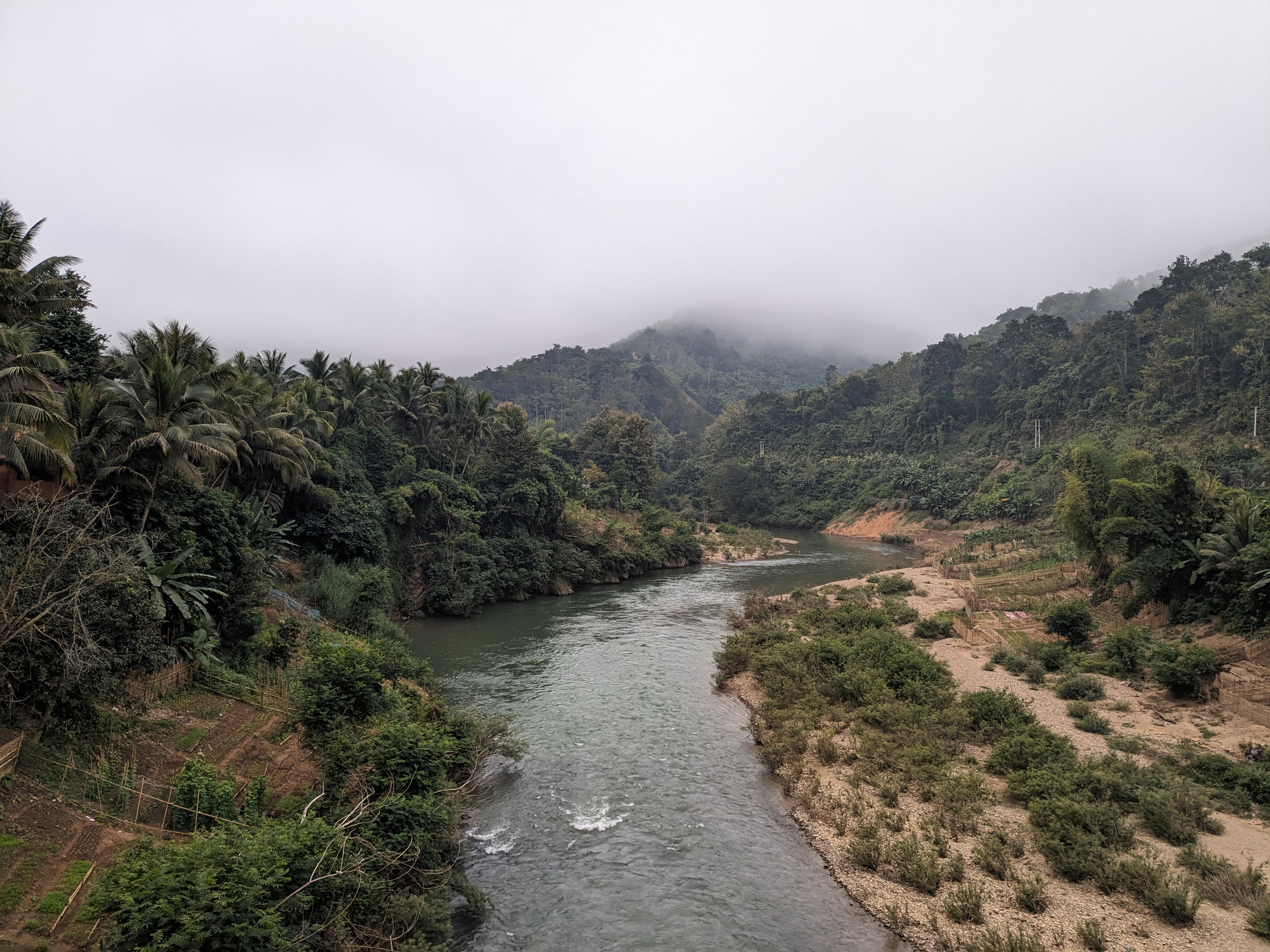

Nong Khiaw, a town nestled by the river amid mountains, marked the final town I’d spend a night of the Laotian leg. A bed at a riverside hostel, complete with a breakfast buffet, offered a serene pause in my journey. I made sure to take advantage of the breakfast, eating as much egg fried rice as could before the road beckoned.

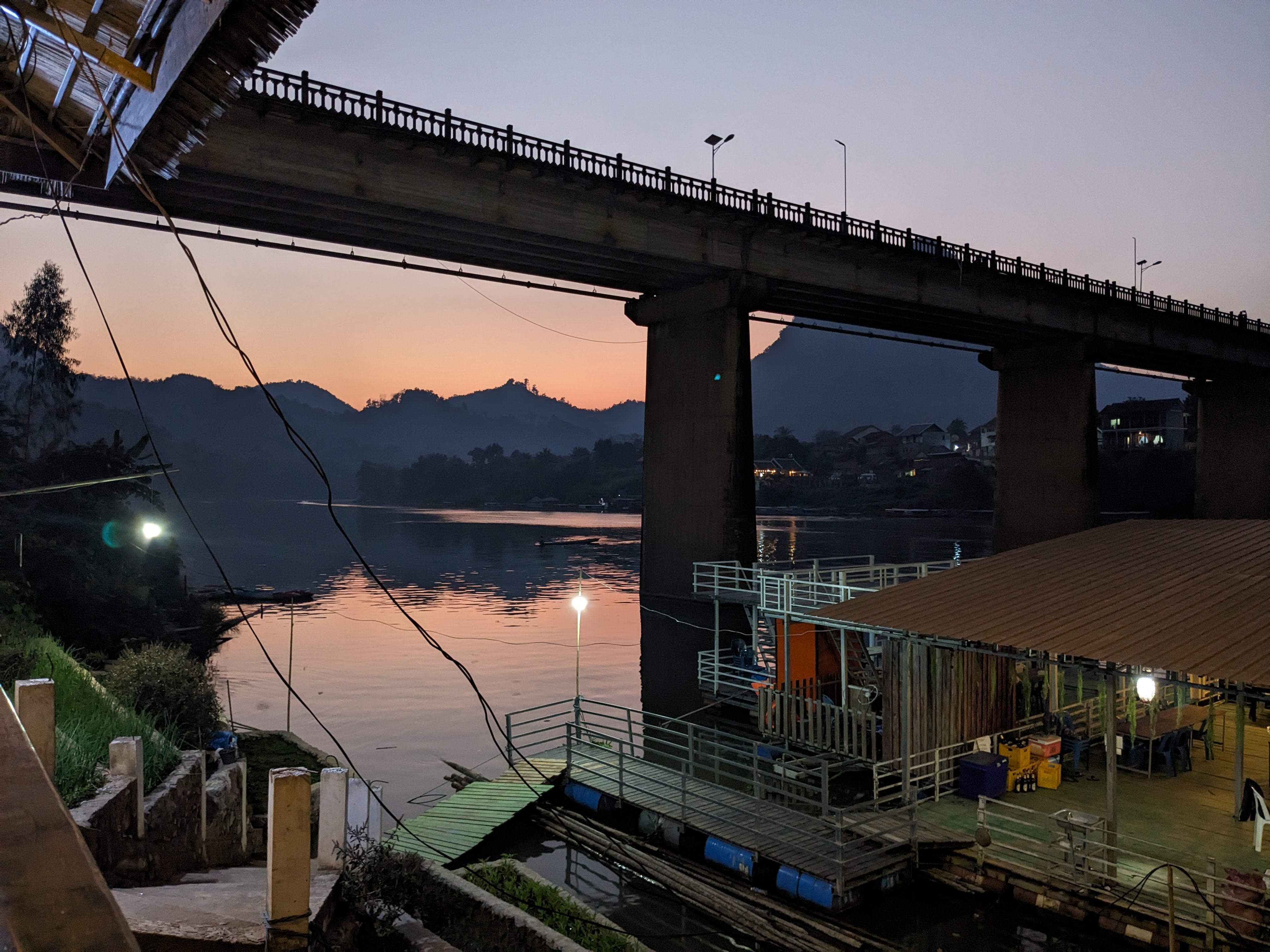

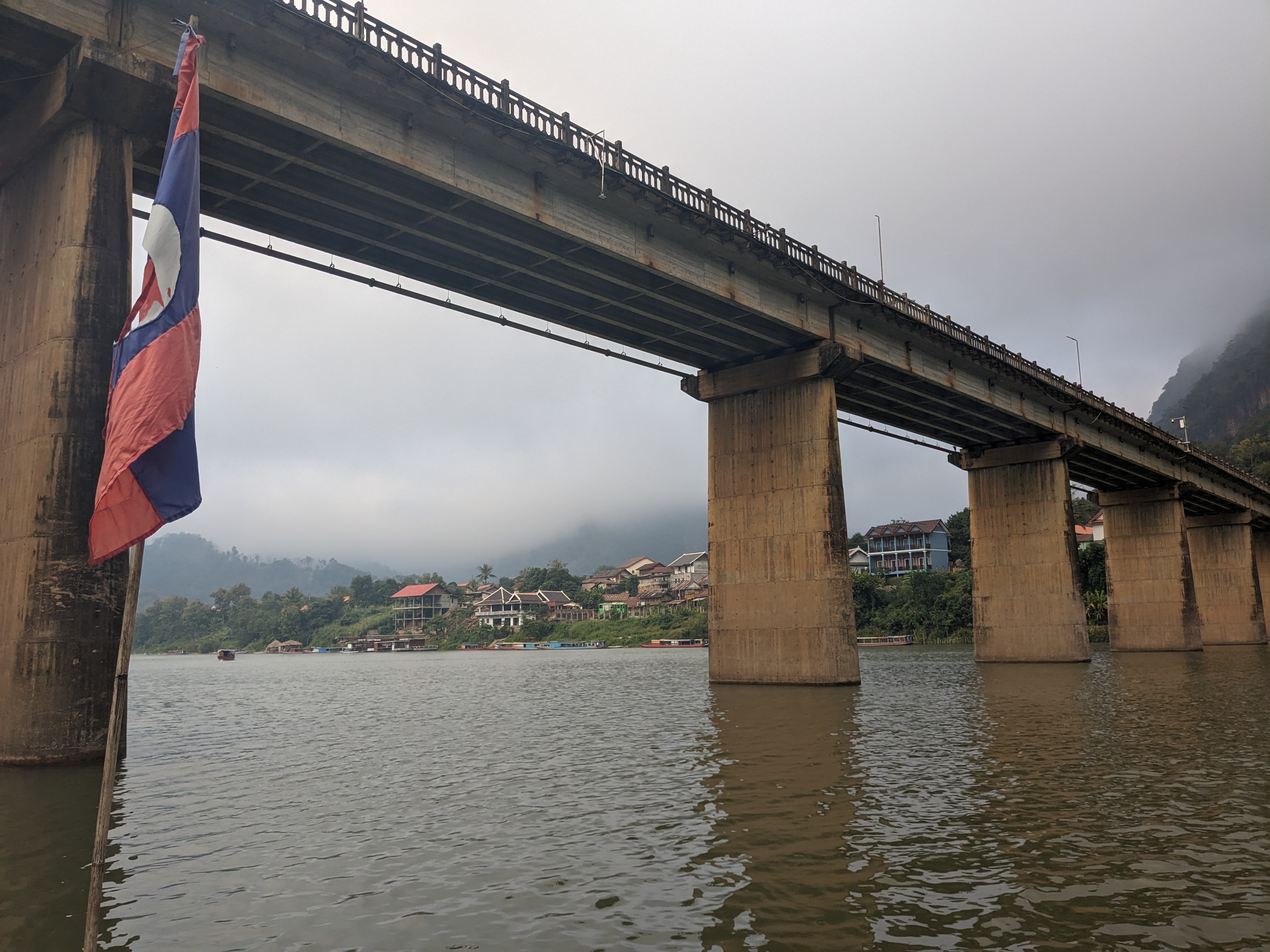
The last few days in Laos were spent on a main but quiet road heading for Vietnam. Just before the border, I met a Dutch couple who had just crossed from Vietnam. We exchanged advice and phone sim cards before parting ways.



Reflecting on Laos, I found it to be one of the most affordable and welcoming places on my journey. The food had been good in Laos too. It was very similar to Thailand, but with a few things remaining from when it was a French colony. These consisted of bread, doughnuts or other sweet baked goods, and cafes. Despite some poor roads and very assertive trucks especially on the mountain road hairpins, the warmth of the people and the richness of the landscape made every pedal stroke enjoyable.
